2023 in Review
No replays 😊
In order finished
In order finished
193 Games
I Uncovered the First Eroge Ever and it’s THIS?? (LOST MEDIA!!!) 😱
(Available on my blog with photo accompaniment)
One year ago, after weeks of intensive research, I put together a culmination of available knowledge on dB-Soft’s notorious, under-documented 177. My intent was for this to be the first of many projects detailing the cultural role and history of key eroge works. My research into 177 bore fruit for seemingly countless historical forays into the likes of Lover Boy, Lolita Syndrome, Night Life, and Emmy. Information on these titles was somewhat scant to be sure, but there was enough to construct a narrative. Lover Boy was knocked out in a couple days, and in revisiting my list of potential topics I was intrigued by a title I’d popped on there without much thought:
Yakyūken (Hudson Soft, n.d.)
Supposedly this predated Koei’s Night Life and even On-Line Systems’ Softporn Adventure by quite some margin, though the specific date was up for debate if not entirely lost. If I were to talk about PSK’s Lolita: Yakyūken at some point, surely it would make more sense to tackle its progenitor first. This presented a few problems. First, there is not exactly a plethora of information about this primitive eroge. Second, it seems to have left no impact. Third, there was no way to play it. For all I knew, Yakyūken did not even exist in the first place, and if it had, nobody had bothered to back it up. VGDensetsu had collated some basic information and screenshots,[1] and BEEP had acquired a copy in 2015,[2] but these only served to tease me, increasing my appetite for forbidden fruit. The type-in version printed in MZ-700 Joyful Pack only had one page of the code documented online, and a search of previous Yahoo! Auctions listings for either cassette came up empty. But MZ-700 Joyful Pack seemed to turn up frequently, that seemed the best course of action.
Unwilling to wait for it to be listed on Yahoo! Auctions again, I turned to Kosho, Japan’s secondhand bookstore search engine. Finding one listing, without a picture, I took a gamble on a copy of what appeared to be the right issue of MZ-700 Joyful Pack, and patiently waited. A month later, it arrived at my door, and while it looked different from the one I had seen online, I excitedly opened it up, flipping through each page for my treasure. Were I looking into computerised Shogi, Go, and Mahjong, I would have found it. Every type-in was a trainer, solver, or some other supplementary program for these three Japanese board games. The trail turned ice cold. Distraught, I resigned myself to searching Yahoo! Auctions weekly for the correct MZ-700 Joyful Pack or a Yakyūken cassette. After another month, the same tape I had seen on BEEP popped up; HuPack #2 for Sharp MZ-700.
Forty years old. Dirty. Discoloured. Untested. I set up my bid in a panic, shaking with anticipation for the next four days, pleading nobody would top my already high bid. I won, it reached my proxy after a week, it was on its way. Quaking as a leaf in a stiff wind, it arrived. Quickly it dawned on me my tape deck had been broken for years, but some kind folks at Gaming Alexandria thankfully offered to dump and scan it on my behalf.[3] After many months of searching, this seemingly lost progenitor to the entirety of erotic gaming was available again. Nobody particularly cared, but I had the first piece of the puzzle I needed. Tape back in hand, I imported a copy of Miyamoto Naoya’s seminal Introduction to Cultural Studies: Adult Games, the first edition of Bishōjo Game Maniax, Sansai Books’ 35 Years of Bishōjo Game History, and Maeda Hiroshi’s Our Bishōjo Game Chronicle, the only books I could source that made mention of Yakyūken.
Only problem was, what exactly is Yakyūken. Why are we stripping while playing rock paper scissors in the first place?
On the Origins of Rock Paper Scissors
Though now effectively ubiquitous across a multitude of cultures, rock paper scissors type hand games (ken) have enjoyed an astounding popularity in Japan since the eighteenth century. Brought to Japan from China sometime before 1743, the original form of Japanese ken is referred to today as kazu-ken, Nagasaki-ken, and hon-ken (“original ken”). Players sat opposite one another, showed any number of fingers on their right hand, and called out a guess as to what the sum of the fingers would be. The left hand counted one’s wins, and the loser of a set was made to drink a cup of sake. With its specific hand movements, Chinese mode of calling numbers, and embedded rules of drinking, kazu-ken flourished in the red-light district of Yoshiwara.[4] Its exoticism in the time of sakoku and Japanese Sinophilia no doubt contributed to its proliferation. However, the theatrics and, as Japanologist Sepp Linhart argues, ritualistic rules made the game difficult to penetrate for those not in the know, a far cry from the rock paper scissors we know today.[5]
Subsequent iterations of ken remedied the complications through the familiar sansukumi-ken (“ken of the three which cower one before the other”) format.[6] A wins over B, B over C, C over A. In its first iteration, mushi-ken, the frog (represented by the thumb) defeated the slug (the pinkie) which won over the snake (index finger). Itself another cultural import from China, mushi-ken gradually acquired a reputation as a game explicitly for children[7], but what won over it culturally was kitsune-ken, later Touhachi-ken. The kitsune trumps the head of the village which wins over the hunter which kills the kitsune. This two-handed ken was more popular among adults in and out of districts like Yoshiwara, particularly as the basis for libations or stripping.[8] The accompanying song, dance, and act of playing kitsune-ken as a strip-game were known as chonkina, the loser doffing an article of clothing until one was bare. Clearly intended for adult entertainment, chonkina nonetheless made itself known to children in time, as recalled in Shibuzawa Seika’s Asakusakko:
"Two children, standing opposite to each other, after having put together the palms of their hands right and left as well as alternately, finally make one of the postures of fox, hunter or village headman to decide a winner. The loser has to put off a piece of what he is wearing every time, until one of them is stark naked. To see the little children on cold winter days trembling, because one after another piece of cloth was stripped them off is a strange scene which can no longer be seen today."[9]
As the nation opened to foreigners again, chonkina became well known among foreigners, and due to the bad reputation it was bestowing to Japan, it was outlawed from September 1894 onward.[10]
Children’s mushi-ken would go on to evolve into jan-ken, the rock paper scissors with which we are familiar, but the specifics of when and how are unclear and unimportant for our purposes. Jan-ken was the preeminent ken by the end of the Meiji period, and ken on the whole was relegated to the realm of children. However, as a game intimately familiar to nearly all Japanese beyond childhood, the simple, fast-paced trichotomy of jan-ken, alongside its association with punishment systems like drink and stripping afforded jan-ken staying power beyond childhood.[11] It is a game which effectively boils down to luck, allowing for decision-making that, if nothing else, is understood to be fair.
Putting the Yakyū in Yakyūken
It’s October, 1924 in Takamatsu. To break in the new ground at Yashima, nearby industrial companies and technical schools are holding a baseball tournament. In a crushing defeat of 0-8, the team from Iyo Railway (later Iyotetsu) was humiliated by the Kosho Club, composed of students from Kagawa Prefectural Takamatsu Commercial School (now Kagawa Prefectural Takamatsu Commercial High School). [12] Later that night, the teams held a get-together at a nearby ryokan, putting on enkai-gei (“party tricks”). Manager of the Iyotetsu team and senryū poet, Goken Maeda, devised an arrangement and choreography of the 1878 nagauta piece “Genroku Hanami Odori.” The Iyotetsu team danced to shamisen in their uniforms to the delight of those in attendance. This first iteration of what would become Yakyūken (literally “baseball fist”) was based on the Japanese rock paper scissors variant kitsune-ken, but by 1947 it came to reflect now common variant jan-ken.[13] The Yakyūken performance was repeated at a consolation party in Iyotetsu’s hometown of Matsuyama, quickly gaining popularity therein and throughout Japan as the team performed it while on tour.[14]
The camaraderie instilled in audiences by the Iyotetsu team’s dance, and its spread as enkai-gei, led to many localised instances of this new form of jan-ken being performed.[15] The specifics of how prevalent it became are impossible to discern, but what is known is that Yakyūken, as with the earlier kazu-ken and kitsune-ken, became another diversion used as an excuse to imbibe and to disrobe.
野球するならこういう具合にしやしゃんせ ~ソラ しやしゃんせ~
投げたら こう打って 打ったなら こう受けて
ランナーになったらエッサッサ ~アウト・セーフヨヨイノヨイ~
It’s 1954. Contemporary Ryūkōka artists Ichiro Wakahara and Terukiku of King Records,[16] Yukie Satoshi and Kubo Takakura of Nippon Columbia,[17] and Harumi Aoki of Victor Japan[18] have all released 78 rpm singles with their own takes on Yakyūken. This musical multiple discovery of a still relatively local song brought into question where it had actually originated, with a photograph of the Matsuyama consolation party cementing Goken Maeda as its creator.[19] With this, Maeda’s original, non-chonkina song and dance came to be understood as honke Yakyūken, the orthodox iteration, the way it was meant to be. As the dance spread, alcohol flowed and clothes were shed. In an attempt to preserve the sanctity of Maeda’s phenomenon, fellow poet Tomita Tanuki established an iemoto system for honke Yakyūken around 1966, formalising its lyrical structure and attempting to preserve Yakyūken as a way, not unlike sumo. As iemoto, Tanuki in effect declared himself to be the highest authority on honke Yakyūken — it did not and would not matter how Yakyūken was actually enjoyed colloquially, only what the iemoto approved of constituted the real thing. At the same time, the city of Matsuyama introduced a new taiko performance — the Iyo-no-Matsuyama Tsuzumi Odori — for that year’s Matsuyama Odori festival. While it was popular, it lacked regionalism, and so in 1970, it was replaced with Yakyūken Odori.[20] It wasn’t just local flavour, however, as the year prior Yakyūken became a national phenomenon for more unsavoury reasons.
Birth of a Sensation: Yakyūken Breaks Into the Mainstream, or Tits Out for TV
Just as in the United States, the 1960s in Japan were marked by an increase in individuals’ buying power and the proliferation of television. Whereas the prior decade relegated television sets to the homes of the wealthy or in street-side display windows, by 1970, 90% of Japanese households owned at least one television set.[21] The penetration of the entertainment sphere into the domestic realm led to a berth of variety and comedy shows, all emphasising the joys of laughter. This proliferation rose concerns among cultural critics in the 1960s, with fears that the often lowbrow, thoughtless humour which frequently lampooned violence and sexuality were unsuited to the home, particularly where children might be watching.[22] Furthermore, such programming was becoming increasingly rote and prescriptive in its approach, thereby lessening its effect with each broadcast, making this new mode of entertainment lascivious and boring. In breaking free of an ever rigid mould, Japanese television’s saviour came in the form of Hagimoto Kinichi and Sakagami Jirō’s comedy duo Konto 55-gō. Pronounced as “konto go-jyuu go gō,” the name’s syllabic tempo, evocation of go-go dancing, and abstruse referencing of baseball player Oh Sadaharu’s 55th homerun of the 1964 season all brought about a rapidity and contemporary sensibility fitting of the pair’s comedic stylings.[23]
From their television debut in 1967, Konto 55-gō demonstrated a dynamic physicality in stark contrast to similar acts, often moving so fast that cameras could not keep up with them, the laughter of the audience sometimes being the only indicator of a punchline’s delivery.[24] While a breath of fresh air, cultural critics lambasted this seeming over-correction as yet again inappropriate for home audiences. On the other hand, audiences adored the duo’s comedy, with renowned Buddhist nun, translator of Genji Monogatari into modern Japanese, and self-described Konto 55-gō fan Jakucho Setouchi (then known as Harumi Setouchi) saying Kinichi and Jirō made her “laugh so much that [her] stomach ached."[25]
This focus on unpredictability, shattering of expectations and conventions, and need to perpetually one-up themselves, Konto 55-gō chased and reinforced the proliferation of what Allan Kaprow described as ‘Happening.’ Originally coined in 1959 in reference to art-related events in which the artist took on theatrical directions and modes of expression, Happenings flourished throughout the United States through the 1950s and 1960s, spreading globally but predominantly in Germany and Japan.[26] In the context of the Japanese television industry, ‘Happening’ was co-opted to refer to anything unscripted — quite the opposite from its intent as a label for deliberate performance — after the early 1968 program Kijima Norio Happuningu Sho (“Kijima Norio’s Happening Show”).[27] To be clear, Happenings in this context were still partially staged just as art Happenings were, but the intent from producers was that Happenings would go off the rails by virtue of a lack of scripting and the co-operation and involvement of audience participants. As other shows and producers chased this spontaneity and carried in the wake of Konto 55-gō’s pioneering transgressions, the stakes became higher and content needed to become more compelling, more novel, more edgy, more risque.
The most critical apex of Happening for our purposes came in 1969 on Konto 55-gō no Urabangumi o Buttobase (“Konto 55-gō Blow away the competition”). It was here that Yakyūken was introduced as a segment of the program, with Kinichi and Jirō facing off against numerous women, each stripping an article of clothing upon a loss. Removed articles were then auctioned to raise funds for children orphaned by traffic accidents.[28] The segment was an enormous hit among adults and children, some critics praising this nakedness as incredibly real, the pinnacle of the Happening.[29] At the same time, just as with all of Konto 55-gō’s antics, many loathed this primetime strip tease wholly inappropriate for children to view, some citing it as a siege against one of the sole bulwarks left against Japan’s growing moral decline, the home.[30] Scorn came not only from without, however, but within as well. Kinichi would later go on to say Konto 55-gō no Urabangumi o Buttobase was his most disliked programme he ever worked on, in no small part due to the Yakyūken segment which brought viewers in not for the comedy of the duo, but for the titillation and obscenity of the Yakyūken act itself.[31] Furthermore, in 2005, Kinichi visited Matsuyama to apologise personally to fourth honke Yakyūken iemoto Tsuyoshitoshi Sawada for misrepresenting Yakyūken. Despite this resentment from Kinichi and some critics, Yakyūken reinvigorated jan-ken into a game with stakes, with merriment, with rules everyone was already familiar with, with a catchy song and dance, that brought the Happening into the real world.
Through Konto 55-gō’s work, Yakyūken presented the same problem that chonkina had in the previous century — a breaking of the boundaries between adult entertainment and the recreation of children. This was no longer bound to the district of Asakusa, but the whole of Japan. Further still, the growing popularity of Yakyūken and its association with Konto 55-gō spread the popular conception of the dance originating as a strip performance, rendering the attempts of Tanuki’s iemoto system to preserve the sanctity of Maeda’s original work increasingly ineffective. The iemoto system only had merit when the associated act could be considered a tradition worth preserving such as tea ceremony or calligraphy. With Yakyūken compromising the cultural zeitgeist as a strip game, it became difficult to consider it a valuable cultural commodity. While it is possible this was the greater underlying reason for Matsuyama’s introduction of Yakyūken Odori to the Matsuyama Odori festival in 1970, it cannot be stated as certainty. What was certain was that Yakyūken was here to stay as a television staple, at least for a moment.
Yakyūken remained a part of Konto 55-gō no Urabangumi o Buttobase through to the end of 1969, afterwards being spun-off into its own program Konto 55-gō no Yakyūken!! From November 26, 1969, thirty minutes of strip rock-paper-scissors littered the airwaves every Wednesday at 9PM until the program was discontinued in April 1970.[32] Yakyūken would not be broadcast on Nippon TV for another two decades, returning on New Year’s Eve, 1993 as part of Supa Denpa Bazaru Toshikoshi Janbo Dosokai (“Super Radio Bazaar New Year’s Jumbo Alumni Reunion”). Though no longer televised in the interim, Yakyūken remained in the cultural zeitgeist as a strip game. While impossible to discern at what point Yakyūken became a mainstay of Japanese pornographic production, it has become ubiquitous — a cursory search of Japanese pornographic clip site eroterest.net gives over 34,000 results for Yakyūken. What is certain is that Yakyūken similarly became not just a mainstay of Japanese erotic video games, but the foundation of the entire industry.
In Which I Finally Tell You About the Video Game Yakyūken by Hudson Soft
With 500,000 yen in starting capital, brothers Yūji and Hiroshi Kudō founded Hudson Co., Ltd. in Toyohira-ku, Sapporo on May 18, 1973. Named after the duo’s favourite class of train, the 4-6-4 Hudson, Yūji and Hiroshi sold fine art photographs of locomotives. In September, the brothers opened a dedicated amateur radio shop, CQ Hudson, which stood at 3-7-26, Hiragishi, Toyohira-ku into the new millennium.[33] After travelling to the US shortly thereafter to market their wares, Yūji saw personal computers on general sale for the first time, inspiring him to bring home a PolyMorphic Systems Poly-88 to Japan and learn to program, taking on two million yen in credit card debt to finance the purchase.[34] Well before the personal computer revolution hit Japan, The Kudō brothers were pioneers. The shops of Akihabara bore no fruit for them, necessitating the Poly-88 import. By 1975, the Kudōs had fully branched out into personal computer products, turning type-in programs into pre-packaged cassette tape releases for the sake of convenience, and becoming early adopters of NEC’s 1976 TK-80 and Sharp’s MZ-80 line of computers.[35] The Kudō brothers also began to start writing their own programs around this time under the development team name Miso Ramen Group.
Hudson released at least thirty-seven games for the MZ-80 line, available occasionally as type-ins in magazines like Micom or in books like MZ-80B活用研究. There was a little bit of everything in Miso Ramen Group’s offerings, from the Maze War-esque Ramen Maze 3D to Othello to Operation Escape, wherein the player had to sneak out of class not unlike Konami’s 1984 Beatles-laden Mikie.[36] In the summer of 1979, Hudson was approached by a computer manufacturer with a proposal to sell their software by mail order with an advertisement in Micom for July 1979.[37] The ads were a success, with the Kudōs recounting later that deposits at the bank took upwards of thirty minutes because tellers thought they might be criminals.[38] Yakyūken’s existence in this initial advertisement makes it plain that the game was developed prior to mid-1979, and the ad was laid bare in a 1996 television documentary special by NHK. Yet Yakyūken’s status as the first commercial erotic game seems to have fallen to the wayside.
The game is incredibly simple, as one might expect from a preliminary type-in program from the late 1970s.[39] The player decides how many articles of clothing they wish themselves to have, not dissimilar from a lives system, and is then introduced to their opponent, Megumi.
わたしめぐみよろしくね。(“I’m Megumi, nice to meet you.”)
A few bars of the Yakyūken song beep languidly from the piezoelectric speaker with a bold OUT!! SAFE!! ヨヨイノヨイ covering the screen. The player chooses グ (rock), チョキ (scissors), or パ (paper). In the event of a tie, the process repeats. Should the player lose, an article of clothing is theoretically removed with no visual indication. Should they win, Megumi is declared ‘out’ and her avatar removes an article of clothing. Shirt, skirt, bra, panties. An eyebrow is cocked when her outer attire comes off, the other joining in twain when her bra comes loose. When she loses her panties, Megumi covers her crotch and shrieks "キャー!!はやくあっちへいって!!" (“Kyaa! Quickly, get out!!”) Game end. The original MZ-80 release was monochromatic, but the later MZ-700 versions were in colour, used to minimal effect. It really is as simple as that.
Who’s on first?
Koei’s first entry in their Strawberry Porno series, Night Life, dominates much of the historical record as the earliest erotic game, particularly in the West. Hardcore Gaming 101, Matthew T. Jones, Wikipedia, and MobyGames (among others) authoritatively claim it to be the first, and on occasion one might see PSK’s Lolita Yakyūken cited in its place, but both works released in 1982, the same year as Custer’s Revenge.[40] ASCII Corporation’s history of the NEC PC-8801 show similar family trees wherein Night Life is the root of all Japanese eroge, its own ancestor being On-Line Systems’ 1981 Softporn Adventure.[41] So too does Pasokon Super Special PC Game 80s Chronicle.[42] When Yakyūken is mentioned by these sources, it is as a possibility, something which might be true but lacks veracity, yet the evidence is plain.
Perhaps Yakyūken was simply too early, releasing before heavy-hitter platforms like the NEC PC-88 or Fujitsu FM-7. The MZ-80 line’s flagship was the MZ-80K, released in 1978. It was available only as an assembly kit, which, coupled with its high retail price of ¥198,000, left it in the realm of the enthusiast and academic (particularly engineering students).[43] While games were blatantly possible on the platform, they were far from the focus, limiting the audience for Hudson’s games, particularly Yakyūken, dramatically. Further still, it was sold primarily through mail order, advertised in niche magazines without pictures. Hudson got paid, and quite well at that, but orders came for a litany of their products. Without knowing this was an explicit game, the prospect of playing digital jan-ken must have paled in comparison to Othello or Hudson’s more arcade-style offerings. By the time it came to the next generation on 1982’s MZ-700, the floodgates had already been opened, and platforms capable of graphics dominated the eroge space.
Perhaps Night Life and Lolita Yakyūken take the historiographical spotlight because they lack the primitiveness of Yakyūken. There is no denying that Yakyūken lacks the graphical fidelity of its descendants. Bound by the 80 column by 50 row display of the MZ-80K, space is limited, colour an impossibility, and everything is comprised of text characters as the hardware could not display graphics. The Japanese character ROM bears no curvilinear shapes apart from circles.[44] The hand signs are malformed, and though your opponent, doesn’t look bad per se, her rectangular body’s attempt at an hourglass figure is not exactly stunning. As games writer Yoshiki Osawa described it in the 2000 book Bisyoujyo Game Maniax, [sic] the visuals lack gender specificity, and exhibit a crudeness that cannot even be called ASCII art.[45] Compared to the full colour illustrations of PSK’s Lolita Yakyūken or even the silhouettes of Night Life, Yakyūken comes up short.
Perhaps Yakyūken was too outdated to catch on without some additional gimmick such as lolicon artwork. The original dance craze had occurred a quarter-century earlier, and it had been barred from television for nearly a decade. By the admission of MZ-700 Joyful Pack, Yakyūken was unlikely to resonate with those who did not grow up in the postwar period. A craze to be sure, but a craze for a generation past, one which had little interest in computing. The type-in’s accompanying text even had to make explicit that Yakyūken had virtually nothing to do with baseball, despite its name, as well as the fact this was a game of chonkina.
What these comparisons ignore is that stunning the world was not necessarily Yakyūken’s purpose. Though sold commercially, projects in its vein from Hudson were as much at home on cassette as they were printed as type-ins. By having their code laid entirely bare, type-ins meant hobbyists dabbling in a brand new technology could visually see and alter the program. The type-in’s purpose was to demonstrate what a computer could do. A user could change Megumi-chan into a man, increase her bust size, style her hair. Perhaps they could do away with jan-ken and replace its symbols with those from Touhachi-ken. Why not increase the number of options available for some digital Rock Paper Scissors Lizard Spock? Just as type-ins are used to teach today, so were they then — deliberately open ecosystems in which to learn. Night Life and Lolita Yakyūken were as walled gardens, the magic unable to be discerned.
In Which I Admit This is All Pedantry and Ultimately Does Not Matter
The fact of the matter is that this is all pedantry and ultimately it does not matter. While monumental firsts are readily recorded, the more niche the subject matter, the more abstruse the truth of a first becomes. Any history student can tell you this after a course on historiography and the historical method. The fact of the matter is that what comes first is arbitrary, determined by fallible, biased humans trying to further an argument.
The search for historical firsts has overtaken much of contemporary historical scholarship, and the problem with this is that there is invariably always an earlier example, and the argument of something as coming earlier is increasingly valueless. Certainly there will always come a true first, but how can we know it is certain with an always imperfect historical record? Does it matter if something came first if it was too ahead of its time? Would we be better off as historians focusing more on moments of critical mass as others in adjacent fields do, such as Marek Zvelebil did in his research on agricultural innovations in the archaeological record?[46] Who is to say. What I can say for sure is that I sincerely hope Yakyūken is not the first commercial erotic game. I hope to be disproved at some point in the future. I hope that in trying to set the record straight in this one instance, it can be set straight in another. I hope the drive for better histories never ends, and that at some point we can dwell less on firsts, and more on more critical narratives in games history, cultural history, human history.
__________________________
[1] Video Games Densetsu, “Yakyūken / 野球拳, Probably the First Erotic Video Game Ever Released.,” Tumblr, November 18, 2016, https://videogamesdensetsu.tumblr.com/post/153336334460/yaky%C5%ABken-%E9%87%8E%E7%90%83%E6%8B%B3-probably-the-first-erotic-video.
[2] “【宅配買取】MZ-700用野球拳(ハドソン)を宮城県仙台市のお客様よりお譲りいただきました|BEEP,” BEEP, April 16, 2019, http://www.beep-shop.com/blog/5921/.
[3] “Hudson Soft - HuPack #2 (Featuring Rowdy-Ball and Yakyūken)(Scans + GameRip) : Hudson Soft,” Internet Archive, July 1, 2023, https://archive.org/details/Hudson-soft-hupack-2.
[4] Sepp Linhart, From Kendô to Jan-Ken: The Deterioration of a Game from Exoticism into Ordinariness (SUNY Press, 1998), 322-323.
[5] Sepp Linhart, “Rituality in the Ken Game,” Ceremony and Ritual in Japan, (2013): 39. https://doi.org/10.4324/9780203429549-10.
[6] Linhart, “Rituality in the Ken Game,” 39.
[7] Kitamura Nobuyo. 1933. Kiyu shoran. 2 vols. Tokyo: Seikokan shoten, quoted in Linhart, From Kendô to Jan-Ken, 325.
[8] Stewart Culin, Korean Games with Notes on the Corresponding Games of China and Japan (Philadelphia: University of Pennsylvania, 1895), 46-47.
[9] Shibuzawa Seika. 1966. Asakusakko. Tokyo: Zoukeisha, quoted in Linhart, From Kendô to Jan-Ken, 334-335.
[10] Hironori Takahashi, “Japanese fist games” (in Japanese): Osaka University of Commerce Amusement Industry Research Institute (2014): 203.
[11] Thomas Crump, Japanese Numbers Game (London: Routledge, 1992). 146.
[12] “本当は脱がない「野球拳」 松山発祥、90年の歴史,” 日本経済新聞, June 29, 2014, https://www.nikkei.com/article/DGXNASFG230DO_V20C14A6BC8000/. Accounts seem to differ on the final score, with some sources claiming it was a 0-6 defeat, others 0-8. As 0-8 is cited by the fourth Iemoto of Yakyūken, that is the number I have decided to use.
[13] Takakashi, “Japanese fist games,” 204-205.
[14] Takakashi, “Japanese fist games,” 204-205.
[15] Takao Ohashi, “A Trademark Registration for ‘野球拳おどり’ (Yakyu-Ken Dance ) - パークス法律事務所,” パークス法律事務所 -, December 9, 2021, https://pax.law/topics/blog/1242/.
[16] 野球けん 若原一郎・照菊, YouTube (YouTube, 2023), https://www.youtube.com/watch?v=H58uhkoQrbo.
[17] 久保幸江・高倉敏 野球拳, YouTube (YouTube, 2015), https://www.youtube.com/watch?v=4Xdfh4dBWeM.
[18] 靑木 はるみ ♪野球けん♪ 1954年 78rpm Record. Columbia Model No G ー 241 Phonograph, YouTube (YouTube, 2022), https://www.youtube.com/watch?v=ycCAK69hc7w.
[19] “本家 野球拳,” GMOとくとくBB|運営実績20年以上のおトクなプロバイダー, accessed October 2, 2023, http://shikoku.me/iyo-matsuri/raijin/honkeyakyuuken/history/index.html.
[20] “松山野球拳おどりのあゆみ,” 松山野球拳おどり 公式ホームページ, accessed October 2, 2023, https://baseball-dance.com/about/story/.
[21] David Humphrey, “Shattering the Everyday: Konto 55-gō and the Teleivision Comedy of the Late 60s” Japan Studies Association Journal 15, no. 1 (2017): 24.
[22] Humphrey, “Shattering the Everyday,” 24.
[23] Humphrey, “Shattering the Everyday,” 28.
[24] Humphrey, “Shattering the Everyday,” 28-30.
[25] Harumi Setouchi, “Tondari hanetari… Konto 55-gō no gei to sugao,” Oh! (August 1968): 176-177, quoted in Humphrey: “Shattering the Everyday,” 30.
[26] Allan Kaprow, “The Legacy of Jackson Pollock (1958),” in Essays on the Blurring of Art and Life (Berkeley: University of California Press, 1993), 1-9.
[27] Humphrey, “Shattering the Everyday,” 32.
[28] “欽ちゃん「もっとも嫌いな番組だった」 2人の芸風の違いが浮き彫りになった「裏番組をぶっとばせ!」,” イザ!, September 4, 2018, https://www.iza.ne.jp/article/20180904-HGNF6BYZ5VLH5CV54ZLQFEC2MA/.
[29] Humphrey, “Shattering the Everyday,” 36-37.
[30] Humphrey, “Shattering the Everyday,” 37.
[31] イザ!, “欽ちゃん”
[32] マスコミ市民 : ジャーナリストと市民を結ぶ情報誌 (36)
[33] “Company Information,” Hudson Soft, December 11, 2000, Internet Archive, https://web.archive.org/web/20001211040400/http://www.hudson.co.jp:80/coinfo/history.html; Brian Eddy, “Video Game History 101: Hudson Soft,” New Retro Wave, January 30, 2017, https://newretrowave.com/2017/01/30/video-game-history-101-hudson-soft/.
[34] Damien McFerran, “Hudson Profile — Part 1,” Retro Gamer Magazine 66, (2009): 68; スペシャル 新・電子立国 第4回 「ビデオゲーム」 ~巨富の攻防~ (NHK, 1996), streaming video, 40:16, Internet Archive. There are conflicting accounts on why Yūji went to the United States and what his first computer was. The information cited here comes from an interview with Yūji himself. Doug Carlston claims that his first computer was actually a SBC80, followed by an IMSAI, but I have not found further evidence to support this claim. See Doug Carlston, Software People: Inside the Computer Business (New York: Simon & Schuster, 1985), 253-257.
[35] The specifics of the timeline become unclear around this time; Japanese microcomputers weren’t commercially available for consumers until mid-1976, yet Hudson’s own company history has them pegged as making PC cassettes and equipment in September 1975.
[36] スペシャル 新・電子立国 第4回, 45:10; “エスケープ大作戦 ,” Animaka.sakura.ne.jp, accessed October 2, 2023, http://animaka.sakura.ne.jp/MZ2000/escape_daisakusen.html; Naoki Miyamoto, Erogē Bunka Kenkyū Gairon (Tōkyō: Sōgō Kagaku Shuppan, 2017), 18-19.
[37] マイコン, July 1979, 11.
[38] スペシャル 新・電子立国 第4回, 45:41.
[39] A full playthrough of the MZ-700 HuPack #2 version is available here: https://youtu.be/M6Emyk5_-jY
[40] “Eroge / Hentai Games,” MobyGames, accessed October 2, 2023, https://www.mobygames.com/group/2508/eroge-hentai-games/; “Eroge,” Wikipedia, September 27, 2023, https://en.wikipedia.org/wiki/Eroge; Matthew T. Jones, “The Impact of Telepresence on Cultural Transmission through Bishoujo Games,” PsychNology Journal 3 (2005): 295; “Retro Japanese Computers: Gaming’s Final Frontier,” Hardcore Gaming 101, accessed October 2, 2023, http://www.hardcoregaming101.net/JPNcomputers/Japanesecomputers2.htm.
[41] 蘇るPC-8801伝説 永久保存版 (Tōkyō: ASCII, 2006), 212.
[42] Mesgamer, “日本最古のエ□ゲー!ハドソンの野球拳を語るの!,” 顔面ソニーレイなの!, accessed October 2, 2023, https://mesgamer.hatenablog.com/entry/2022/02/21/173437.
[43] Sharp, Sharp 100-Year History, (2012), 6-08.
[44] “80k Download - Roms,” MZ, accessed October 2, 2023, https://original.sharpmz.org/mz-80k/dldrom.htm.
[45] 美少女ゲームマニアックス (Tōkyō: Kirutaimukomyunikēshon, 2001), 66.
[46] See Marek Zvelebil, “Transition to Farming in Norther Europe: A Hunter-Gatherer Perspective,” Norwegian Archaeological Review 17 (1984), 104-127.
(Available on my blog with photo accompaniment)
One year ago, after weeks of intensive research, I put together a culmination of available knowledge on dB-Soft’s notorious, under-documented 177. My intent was for this to be the first of many projects detailing the cultural role and history of key eroge works. My research into 177 bore fruit for seemingly countless historical forays into the likes of Lover Boy, Lolita Syndrome, Night Life, and Emmy. Information on these titles was somewhat scant to be sure, but there was enough to construct a narrative. Lover Boy was knocked out in a couple days, and in revisiting my list of potential topics I was intrigued by a title I’d popped on there without much thought:
Yakyūken (Hudson Soft, n.d.)
Supposedly this predated Koei’s Night Life and even On-Line Systems’ Softporn Adventure by quite some margin, though the specific date was up for debate if not entirely lost. If I were to talk about PSK’s Lolita: Yakyūken at some point, surely it would make more sense to tackle its progenitor first. This presented a few problems. First, there is not exactly a plethora of information about this primitive eroge. Second, it seems to have left no impact. Third, there was no way to play it. For all I knew, Yakyūken did not even exist in the first place, and if it had, nobody had bothered to back it up. VGDensetsu had collated some basic information and screenshots,[1] and BEEP had acquired a copy in 2015,[2] but these only served to tease me, increasing my appetite for forbidden fruit. The type-in version printed in MZ-700 Joyful Pack only had one page of the code documented online, and a search of previous Yahoo! Auctions listings for either cassette came up empty. But MZ-700 Joyful Pack seemed to turn up frequently, that seemed the best course of action.
Unwilling to wait for it to be listed on Yahoo! Auctions again, I turned to Kosho, Japan’s secondhand bookstore search engine. Finding one listing, without a picture, I took a gamble on a copy of what appeared to be the right issue of MZ-700 Joyful Pack, and patiently waited. A month later, it arrived at my door, and while it looked different from the one I had seen online, I excitedly opened it up, flipping through each page for my treasure. Were I looking into computerised Shogi, Go, and Mahjong, I would have found it. Every type-in was a trainer, solver, or some other supplementary program for these three Japanese board games. The trail turned ice cold. Distraught, I resigned myself to searching Yahoo! Auctions weekly for the correct MZ-700 Joyful Pack or a Yakyūken cassette. After another month, the same tape I had seen on BEEP popped up; HuPack #2 for Sharp MZ-700.
Forty years old. Dirty. Discoloured. Untested. I set up my bid in a panic, shaking with anticipation for the next four days, pleading nobody would top my already high bid. I won, it reached my proxy after a week, it was on its way. Quaking as a leaf in a stiff wind, it arrived. Quickly it dawned on me my tape deck had been broken for years, but some kind folks at Gaming Alexandria thankfully offered to dump and scan it on my behalf.[3] After many months of searching, this seemingly lost progenitor to the entirety of erotic gaming was available again. Nobody particularly cared, but I had the first piece of the puzzle I needed. Tape back in hand, I imported a copy of Miyamoto Naoya’s seminal Introduction to Cultural Studies: Adult Games, the first edition of Bishōjo Game Maniax, Sansai Books’ 35 Years of Bishōjo Game History, and Maeda Hiroshi’s Our Bishōjo Game Chronicle, the only books I could source that made mention of Yakyūken.
Only problem was, what exactly is Yakyūken. Why are we stripping while playing rock paper scissors in the first place?
On the Origins of Rock Paper Scissors
Though now effectively ubiquitous across a multitude of cultures, rock paper scissors type hand games (ken) have enjoyed an astounding popularity in Japan since the eighteenth century. Brought to Japan from China sometime before 1743, the original form of Japanese ken is referred to today as kazu-ken, Nagasaki-ken, and hon-ken (“original ken”). Players sat opposite one another, showed any number of fingers on their right hand, and called out a guess as to what the sum of the fingers would be. The left hand counted one’s wins, and the loser of a set was made to drink a cup of sake. With its specific hand movements, Chinese mode of calling numbers, and embedded rules of drinking, kazu-ken flourished in the red-light district of Yoshiwara.[4] Its exoticism in the time of sakoku and Japanese Sinophilia no doubt contributed to its proliferation. However, the theatrics and, as Japanologist Sepp Linhart argues, ritualistic rules made the game difficult to penetrate for those not in the know, a far cry from the rock paper scissors we know today.[5]
Subsequent iterations of ken remedied the complications through the familiar sansukumi-ken (“ken of the three which cower one before the other”) format.[6] A wins over B, B over C, C over A. In its first iteration, mushi-ken, the frog (represented by the thumb) defeated the slug (the pinkie) which won over the snake (index finger). Itself another cultural import from China, mushi-ken gradually acquired a reputation as a game explicitly for children[7], but what won over it culturally was kitsune-ken, later Touhachi-ken. The kitsune trumps the head of the village which wins over the hunter which kills the kitsune. This two-handed ken was more popular among adults in and out of districts like Yoshiwara, particularly as the basis for libations or stripping.[8] The accompanying song, dance, and act of playing kitsune-ken as a strip-game were known as chonkina, the loser doffing an article of clothing until one was bare. Clearly intended for adult entertainment, chonkina nonetheless made itself known to children in time, as recalled in Shibuzawa Seika’s Asakusakko:
"Two children, standing opposite to each other, after having put together the palms of their hands right and left as well as alternately, finally make one of the postures of fox, hunter or village headman to decide a winner. The loser has to put off a piece of what he is wearing every time, until one of them is stark naked. To see the little children on cold winter days trembling, because one after another piece of cloth was stripped them off is a strange scene which can no longer be seen today."[9]
As the nation opened to foreigners again, chonkina became well known among foreigners, and due to the bad reputation it was bestowing to Japan, it was outlawed from September 1894 onward.[10]
Children’s mushi-ken would go on to evolve into jan-ken, the rock paper scissors with which we are familiar, but the specifics of when and how are unclear and unimportant for our purposes. Jan-ken was the preeminent ken by the end of the Meiji period, and ken on the whole was relegated to the realm of children. However, as a game intimately familiar to nearly all Japanese beyond childhood, the simple, fast-paced trichotomy of jan-ken, alongside its association with punishment systems like drink and stripping afforded jan-ken staying power beyond childhood.[11] It is a game which effectively boils down to luck, allowing for decision-making that, if nothing else, is understood to be fair.
Putting the Yakyū in Yakyūken
It’s October, 1924 in Takamatsu. To break in the new ground at Yashima, nearby industrial companies and technical schools are holding a baseball tournament. In a crushing defeat of 0-8, the team from Iyo Railway (later Iyotetsu) was humiliated by the Kosho Club, composed of students from Kagawa Prefectural Takamatsu Commercial School (now Kagawa Prefectural Takamatsu Commercial High School). [12] Later that night, the teams held a get-together at a nearby ryokan, putting on enkai-gei (“party tricks”). Manager of the Iyotetsu team and senryū poet, Goken Maeda, devised an arrangement and choreography of the 1878 nagauta piece “Genroku Hanami Odori.” The Iyotetsu team danced to shamisen in their uniforms to the delight of those in attendance. This first iteration of what would become Yakyūken (literally “baseball fist”) was based on the Japanese rock paper scissors variant kitsune-ken, but by 1947 it came to reflect now common variant jan-ken.[13] The Yakyūken performance was repeated at a consolation party in Iyotetsu’s hometown of Matsuyama, quickly gaining popularity therein and throughout Japan as the team performed it while on tour.[14]
The camaraderie instilled in audiences by the Iyotetsu team’s dance, and its spread as enkai-gei, led to many localised instances of this new form of jan-ken being performed.[15] The specifics of how prevalent it became are impossible to discern, but what is known is that Yakyūken, as with the earlier kazu-ken and kitsune-ken, became another diversion used as an excuse to imbibe and to disrobe.
野球するならこういう具合にしやしゃんせ ~ソラ しやしゃんせ~
投げたら こう打って 打ったなら こう受けて
ランナーになったらエッサッサ ~アウト・セーフヨヨイノヨイ~
It’s 1954. Contemporary Ryūkōka artists Ichiro Wakahara and Terukiku of King Records,[16] Yukie Satoshi and Kubo Takakura of Nippon Columbia,[17] and Harumi Aoki of Victor Japan[18] have all released 78 rpm singles with their own takes on Yakyūken. This musical multiple discovery of a still relatively local song brought into question where it had actually originated, with a photograph of the Matsuyama consolation party cementing Goken Maeda as its creator.[19] With this, Maeda’s original, non-chonkina song and dance came to be understood as honke Yakyūken, the orthodox iteration, the way it was meant to be. As the dance spread, alcohol flowed and clothes were shed. In an attempt to preserve the sanctity of Maeda’s phenomenon, fellow poet Tomita Tanuki established an iemoto system for honke Yakyūken around 1966, formalising its lyrical structure and attempting to preserve Yakyūken as a way, not unlike sumo. As iemoto, Tanuki in effect declared himself to be the highest authority on honke Yakyūken — it did not and would not matter how Yakyūken was actually enjoyed colloquially, only what the iemoto approved of constituted the real thing. At the same time, the city of Matsuyama introduced a new taiko performance — the Iyo-no-Matsuyama Tsuzumi Odori — for that year’s Matsuyama Odori festival. While it was popular, it lacked regionalism, and so in 1970, it was replaced with Yakyūken Odori.[20] It wasn’t just local flavour, however, as the year prior Yakyūken became a national phenomenon for more unsavoury reasons.
Birth of a Sensation: Yakyūken Breaks Into the Mainstream, or Tits Out for TV
Just as in the United States, the 1960s in Japan were marked by an increase in individuals’ buying power and the proliferation of television. Whereas the prior decade relegated television sets to the homes of the wealthy or in street-side display windows, by 1970, 90% of Japanese households owned at least one television set.[21] The penetration of the entertainment sphere into the domestic realm led to a berth of variety and comedy shows, all emphasising the joys of laughter. This proliferation rose concerns among cultural critics in the 1960s, with fears that the often lowbrow, thoughtless humour which frequently lampooned violence and sexuality were unsuited to the home, particularly where children might be watching.[22] Furthermore, such programming was becoming increasingly rote and prescriptive in its approach, thereby lessening its effect with each broadcast, making this new mode of entertainment lascivious and boring. In breaking free of an ever rigid mould, Japanese television’s saviour came in the form of Hagimoto Kinichi and Sakagami Jirō’s comedy duo Konto 55-gō. Pronounced as “konto go-jyuu go gō,” the name’s syllabic tempo, evocation of go-go dancing, and abstruse referencing of baseball player Oh Sadaharu’s 55th homerun of the 1964 season all brought about a rapidity and contemporary sensibility fitting of the pair’s comedic stylings.[23]
From their television debut in 1967, Konto 55-gō demonstrated a dynamic physicality in stark contrast to similar acts, often moving so fast that cameras could not keep up with them, the laughter of the audience sometimes being the only indicator of a punchline’s delivery.[24] While a breath of fresh air, cultural critics lambasted this seeming over-correction as yet again inappropriate for home audiences. On the other hand, audiences adored the duo’s comedy, with renowned Buddhist nun, translator of Genji Monogatari into modern Japanese, and self-described Konto 55-gō fan Jakucho Setouchi (then known as Harumi Setouchi) saying Kinichi and Jirō made her “laugh so much that [her] stomach ached."[25]
This focus on unpredictability, shattering of expectations and conventions, and need to perpetually one-up themselves, Konto 55-gō chased and reinforced the proliferation of what Allan Kaprow described as ‘Happening.’ Originally coined in 1959 in reference to art-related events in which the artist took on theatrical directions and modes of expression, Happenings flourished throughout the United States through the 1950s and 1960s, spreading globally but predominantly in Germany and Japan.[26] In the context of the Japanese television industry, ‘Happening’ was co-opted to refer to anything unscripted — quite the opposite from its intent as a label for deliberate performance — after the early 1968 program Kijima Norio Happuningu Sho (“Kijima Norio’s Happening Show”).[27] To be clear, Happenings in this context were still partially staged just as art Happenings were, but the intent from producers was that Happenings would go off the rails by virtue of a lack of scripting and the co-operation and involvement of audience participants. As other shows and producers chased this spontaneity and carried in the wake of Konto 55-gō’s pioneering transgressions, the stakes became higher and content needed to become more compelling, more novel, more edgy, more risque.
The most critical apex of Happening for our purposes came in 1969 on Konto 55-gō no Urabangumi o Buttobase (“Konto 55-gō Blow away the competition”). It was here that Yakyūken was introduced as a segment of the program, with Kinichi and Jirō facing off against numerous women, each stripping an article of clothing upon a loss. Removed articles were then auctioned to raise funds for children orphaned by traffic accidents.[28] The segment was an enormous hit among adults and children, some critics praising this nakedness as incredibly real, the pinnacle of the Happening.[29] At the same time, just as with all of Konto 55-gō’s antics, many loathed this primetime strip tease wholly inappropriate for children to view, some citing it as a siege against one of the sole bulwarks left against Japan’s growing moral decline, the home.[30] Scorn came not only from without, however, but within as well. Kinichi would later go on to say Konto 55-gō no Urabangumi o Buttobase was his most disliked programme he ever worked on, in no small part due to the Yakyūken segment which brought viewers in not for the comedy of the duo, but for the titillation and obscenity of the Yakyūken act itself.[31] Furthermore, in 2005, Kinichi visited Matsuyama to apologise personally to fourth honke Yakyūken iemoto Tsuyoshitoshi Sawada for misrepresenting Yakyūken. Despite this resentment from Kinichi and some critics, Yakyūken reinvigorated jan-ken into a game with stakes, with merriment, with rules everyone was already familiar with, with a catchy song and dance, that brought the Happening into the real world.
Through Konto 55-gō’s work, Yakyūken presented the same problem that chonkina had in the previous century — a breaking of the boundaries between adult entertainment and the recreation of children. This was no longer bound to the district of Asakusa, but the whole of Japan. Further still, the growing popularity of Yakyūken and its association with Konto 55-gō spread the popular conception of the dance originating as a strip performance, rendering the attempts of Tanuki’s iemoto system to preserve the sanctity of Maeda’s original work increasingly ineffective. The iemoto system only had merit when the associated act could be considered a tradition worth preserving such as tea ceremony or calligraphy. With Yakyūken compromising the cultural zeitgeist as a strip game, it became difficult to consider it a valuable cultural commodity. While it is possible this was the greater underlying reason for Matsuyama’s introduction of Yakyūken Odori to the Matsuyama Odori festival in 1970, it cannot be stated as certainty. What was certain was that Yakyūken was here to stay as a television staple, at least for a moment.
Yakyūken remained a part of Konto 55-gō no Urabangumi o Buttobase through to the end of 1969, afterwards being spun-off into its own program Konto 55-gō no Yakyūken!! From November 26, 1969, thirty minutes of strip rock-paper-scissors littered the airwaves every Wednesday at 9PM until the program was discontinued in April 1970.[32] Yakyūken would not be broadcast on Nippon TV for another two decades, returning on New Year’s Eve, 1993 as part of Supa Denpa Bazaru Toshikoshi Janbo Dosokai (“Super Radio Bazaar New Year’s Jumbo Alumni Reunion”). Though no longer televised in the interim, Yakyūken remained in the cultural zeitgeist as a strip game. While impossible to discern at what point Yakyūken became a mainstay of Japanese pornographic production, it has become ubiquitous — a cursory search of Japanese pornographic clip site eroterest.net gives over 34,000 results for Yakyūken. What is certain is that Yakyūken similarly became not just a mainstay of Japanese erotic video games, but the foundation of the entire industry.
In Which I Finally Tell You About the Video Game Yakyūken by Hudson Soft
With 500,000 yen in starting capital, brothers Yūji and Hiroshi Kudō founded Hudson Co., Ltd. in Toyohira-ku, Sapporo on May 18, 1973. Named after the duo’s favourite class of train, the 4-6-4 Hudson, Yūji and Hiroshi sold fine art photographs of locomotives. In September, the brothers opened a dedicated amateur radio shop, CQ Hudson, which stood at 3-7-26, Hiragishi, Toyohira-ku into the new millennium.[33] After travelling to the US shortly thereafter to market their wares, Yūji saw personal computers on general sale for the first time, inspiring him to bring home a PolyMorphic Systems Poly-88 to Japan and learn to program, taking on two million yen in credit card debt to finance the purchase.[34] Well before the personal computer revolution hit Japan, The Kudō brothers were pioneers. The shops of Akihabara bore no fruit for them, necessitating the Poly-88 import. By 1975, the Kudōs had fully branched out into personal computer products, turning type-in programs into pre-packaged cassette tape releases for the sake of convenience, and becoming early adopters of NEC’s 1976 TK-80 and Sharp’s MZ-80 line of computers.[35] The Kudō brothers also began to start writing their own programs around this time under the development team name Miso Ramen Group.
Hudson released at least thirty-seven games for the MZ-80 line, available occasionally as type-ins in magazines like Micom or in books like MZ-80B活用研究. There was a little bit of everything in Miso Ramen Group’s offerings, from the Maze War-esque Ramen Maze 3D to Othello to Operation Escape, wherein the player had to sneak out of class not unlike Konami’s 1984 Beatles-laden Mikie.[36] In the summer of 1979, Hudson was approached by a computer manufacturer with a proposal to sell their software by mail order with an advertisement in Micom for July 1979.[37] The ads were a success, with the Kudōs recounting later that deposits at the bank took upwards of thirty minutes because tellers thought they might be criminals.[38] Yakyūken’s existence in this initial advertisement makes it plain that the game was developed prior to mid-1979, and the ad was laid bare in a 1996 television documentary special by NHK. Yet Yakyūken’s status as the first commercial erotic game seems to have fallen to the wayside.
The game is incredibly simple, as one might expect from a preliminary type-in program from the late 1970s.[39] The player decides how many articles of clothing they wish themselves to have, not dissimilar from a lives system, and is then introduced to their opponent, Megumi.
わたしめぐみよろしくね。(“I’m Megumi, nice to meet you.”)
A few bars of the Yakyūken song beep languidly from the piezoelectric speaker with a bold OUT!! SAFE!! ヨヨイノヨイ covering the screen. The player chooses グ (rock), チョキ (scissors), or パ (paper). In the event of a tie, the process repeats. Should the player lose, an article of clothing is theoretically removed with no visual indication. Should they win, Megumi is declared ‘out’ and her avatar removes an article of clothing. Shirt, skirt, bra, panties. An eyebrow is cocked when her outer attire comes off, the other joining in twain when her bra comes loose. When she loses her panties, Megumi covers her crotch and shrieks "キャー!!はやくあっちへいって!!" (“Kyaa! Quickly, get out!!”) Game end. The original MZ-80 release was monochromatic, but the later MZ-700 versions were in colour, used to minimal effect. It really is as simple as that.
Who’s on first?
Koei’s first entry in their Strawberry Porno series, Night Life, dominates much of the historical record as the earliest erotic game, particularly in the West. Hardcore Gaming 101, Matthew T. Jones, Wikipedia, and MobyGames (among others) authoritatively claim it to be the first, and on occasion one might see PSK’s Lolita Yakyūken cited in its place, but both works released in 1982, the same year as Custer’s Revenge.[40] ASCII Corporation’s history of the NEC PC-8801 show similar family trees wherein Night Life is the root of all Japanese eroge, its own ancestor being On-Line Systems’ 1981 Softporn Adventure.[41] So too does Pasokon Super Special PC Game 80s Chronicle.[42] When Yakyūken is mentioned by these sources, it is as a possibility, something which might be true but lacks veracity, yet the evidence is plain.
Perhaps Yakyūken was simply too early, releasing before heavy-hitter platforms like the NEC PC-88 or Fujitsu FM-7. The MZ-80 line’s flagship was the MZ-80K, released in 1978. It was available only as an assembly kit, which, coupled with its high retail price of ¥198,000, left it in the realm of the enthusiast and academic (particularly engineering students).[43] While games were blatantly possible on the platform, they were far from the focus, limiting the audience for Hudson’s games, particularly Yakyūken, dramatically. Further still, it was sold primarily through mail order, advertised in niche magazines without pictures. Hudson got paid, and quite well at that, but orders came for a litany of their products. Without knowing this was an explicit game, the prospect of playing digital jan-ken must have paled in comparison to Othello or Hudson’s more arcade-style offerings. By the time it came to the next generation on 1982’s MZ-700, the floodgates had already been opened, and platforms capable of graphics dominated the eroge space.
Perhaps Night Life and Lolita Yakyūken take the historiographical spotlight because they lack the primitiveness of Yakyūken. There is no denying that Yakyūken lacks the graphical fidelity of its descendants. Bound by the 80 column by 50 row display of the MZ-80K, space is limited, colour an impossibility, and everything is comprised of text characters as the hardware could not display graphics. The Japanese character ROM bears no curvilinear shapes apart from circles.[44] The hand signs are malformed, and though your opponent, doesn’t look bad per se, her rectangular body’s attempt at an hourglass figure is not exactly stunning. As games writer Yoshiki Osawa described it in the 2000 book Bisyoujyo Game Maniax, [sic] the visuals lack gender specificity, and exhibit a crudeness that cannot even be called ASCII art.[45] Compared to the full colour illustrations of PSK’s Lolita Yakyūken or even the silhouettes of Night Life, Yakyūken comes up short.
Perhaps Yakyūken was too outdated to catch on without some additional gimmick such as lolicon artwork. The original dance craze had occurred a quarter-century earlier, and it had been barred from television for nearly a decade. By the admission of MZ-700 Joyful Pack, Yakyūken was unlikely to resonate with those who did not grow up in the postwar period. A craze to be sure, but a craze for a generation past, one which had little interest in computing. The type-in’s accompanying text even had to make explicit that Yakyūken had virtually nothing to do with baseball, despite its name, as well as the fact this was a game of chonkina.
What these comparisons ignore is that stunning the world was not necessarily Yakyūken’s purpose. Though sold commercially, projects in its vein from Hudson were as much at home on cassette as they were printed as type-ins. By having their code laid entirely bare, type-ins meant hobbyists dabbling in a brand new technology could visually see and alter the program. The type-in’s purpose was to demonstrate what a computer could do. A user could change Megumi-chan into a man, increase her bust size, style her hair. Perhaps they could do away with jan-ken and replace its symbols with those from Touhachi-ken. Why not increase the number of options available for some digital Rock Paper Scissors Lizard Spock? Just as type-ins are used to teach today, so were they then — deliberately open ecosystems in which to learn. Night Life and Lolita Yakyūken were as walled gardens, the magic unable to be discerned.
In Which I Admit This is All Pedantry and Ultimately Does Not Matter
The fact of the matter is that this is all pedantry and ultimately it does not matter. While monumental firsts are readily recorded, the more niche the subject matter, the more abstruse the truth of a first becomes. Any history student can tell you this after a course on historiography and the historical method. The fact of the matter is that what comes first is arbitrary, determined by fallible, biased humans trying to further an argument.
The search for historical firsts has overtaken much of contemporary historical scholarship, and the problem with this is that there is invariably always an earlier example, and the argument of something as coming earlier is increasingly valueless. Certainly there will always come a true first, but how can we know it is certain with an always imperfect historical record? Does it matter if something came first if it was too ahead of its time? Would we be better off as historians focusing more on moments of critical mass as others in adjacent fields do, such as Marek Zvelebil did in his research on agricultural innovations in the archaeological record?[46] Who is to say. What I can say for sure is that I sincerely hope Yakyūken is not the first commercial erotic game. I hope to be disproved at some point in the future. I hope that in trying to set the record straight in this one instance, it can be set straight in another. I hope the drive for better histories never ends, and that at some point we can dwell less on firsts, and more on more critical narratives in games history, cultural history, human history.
__________________________
[1] Video Games Densetsu, “Yakyūken / 野球拳, Probably the First Erotic Video Game Ever Released.,” Tumblr, November 18, 2016, https://videogamesdensetsu.tumblr.com/post/153336334460/yaky%C5%ABken-%E9%87%8E%E7%90%83%E6%8B%B3-probably-the-first-erotic-video.
[2] “【宅配買取】MZ-700用野球拳(ハドソン)を宮城県仙台市のお客様よりお譲りいただきました|BEEP,” BEEP, April 16, 2019, http://www.beep-shop.com/blog/5921/.
[3] “Hudson Soft - HuPack #2 (Featuring Rowdy-Ball and Yakyūken)(Scans + GameRip) : Hudson Soft,” Internet Archive, July 1, 2023, https://archive.org/details/Hudson-soft-hupack-2.
[4] Sepp Linhart, From Kendô to Jan-Ken: The Deterioration of a Game from Exoticism into Ordinariness (SUNY Press, 1998), 322-323.
[5] Sepp Linhart, “Rituality in the Ken Game,” Ceremony and Ritual in Japan, (2013): 39. https://doi.org/10.4324/9780203429549-10.
[6] Linhart, “Rituality in the Ken Game,” 39.
[7] Kitamura Nobuyo. 1933. Kiyu shoran. 2 vols. Tokyo: Seikokan shoten, quoted in Linhart, From Kendô to Jan-Ken, 325.
[8] Stewart Culin, Korean Games with Notes on the Corresponding Games of China and Japan (Philadelphia: University of Pennsylvania, 1895), 46-47.
[9] Shibuzawa Seika. 1966. Asakusakko. Tokyo: Zoukeisha, quoted in Linhart, From Kendô to Jan-Ken, 334-335.
[10] Hironori Takahashi, “Japanese fist games” (in Japanese): Osaka University of Commerce Amusement Industry Research Institute (2014): 203.
[11] Thomas Crump, Japanese Numbers Game (London: Routledge, 1992). 146.
[12] “本当は脱がない「野球拳」 松山発祥、90年の歴史,” 日本経済新聞, June 29, 2014, https://www.nikkei.com/article/DGXNASFG230DO_V20C14A6BC8000/. Accounts seem to differ on the final score, with some sources claiming it was a 0-6 defeat, others 0-8. As 0-8 is cited by the fourth Iemoto of Yakyūken, that is the number I have decided to use.
[13] Takakashi, “Japanese fist games,” 204-205.
[14] Takakashi, “Japanese fist games,” 204-205.
[15] Takao Ohashi, “A Trademark Registration for ‘野球拳おどり’ (Yakyu-Ken Dance ) - パークス法律事務所,” パークス法律事務所 -, December 9, 2021, https://pax.law/topics/blog/1242/.
[16] 野球けん 若原一郎・照菊, YouTube (YouTube, 2023), https://www.youtube.com/watch?v=H58uhkoQrbo.
[17] 久保幸江・高倉敏 野球拳, YouTube (YouTube, 2015), https://www.youtube.com/watch?v=4Xdfh4dBWeM.
[18] 靑木 はるみ ♪野球けん♪ 1954年 78rpm Record. Columbia Model No G ー 241 Phonograph, YouTube (YouTube, 2022), https://www.youtube.com/watch?v=ycCAK69hc7w.
[19] “本家 野球拳,” GMOとくとくBB|運営実績20年以上のおトクなプロバイダー, accessed October 2, 2023, http://shikoku.me/iyo-matsuri/raijin/honkeyakyuuken/history/index.html.
[20] “松山野球拳おどりのあゆみ,” 松山野球拳おどり 公式ホームページ, accessed October 2, 2023, https://baseball-dance.com/about/story/.
[21] David Humphrey, “Shattering the Everyday: Konto 55-gō and the Teleivision Comedy of the Late 60s” Japan Studies Association Journal 15, no. 1 (2017): 24.
[22] Humphrey, “Shattering the Everyday,” 24.
[23] Humphrey, “Shattering the Everyday,” 28.
[24] Humphrey, “Shattering the Everyday,” 28-30.
[25] Harumi Setouchi, “Tondari hanetari… Konto 55-gō no gei to sugao,” Oh! (August 1968): 176-177, quoted in Humphrey: “Shattering the Everyday,” 30.
[26] Allan Kaprow, “The Legacy of Jackson Pollock (1958),” in Essays on the Blurring of Art and Life (Berkeley: University of California Press, 1993), 1-9.
[27] Humphrey, “Shattering the Everyday,” 32.
[28] “欽ちゃん「もっとも嫌いな番組だった」 2人の芸風の違いが浮き彫りになった「裏番組をぶっとばせ!」,” イザ!, September 4, 2018, https://www.iza.ne.jp/article/20180904-HGNF6BYZ5VLH5CV54ZLQFEC2MA/.
[29] Humphrey, “Shattering the Everyday,” 36-37.
[30] Humphrey, “Shattering the Everyday,” 37.
[31] イザ!, “欽ちゃん”
[32] マスコミ市民 : ジャーナリストと市民を結ぶ情報誌 (36)
[33] “Company Information,” Hudson Soft, December 11, 2000, Internet Archive, https://web.archive.org/web/20001211040400/http://www.hudson.co.jp:80/coinfo/history.html; Brian Eddy, “Video Game History 101: Hudson Soft,” New Retro Wave, January 30, 2017, https://newretrowave.com/2017/01/30/video-game-history-101-hudson-soft/.
[34] Damien McFerran, “Hudson Profile — Part 1,” Retro Gamer Magazine 66, (2009): 68; スペシャル 新・電子立国 第4回 「ビデオゲーム」 ~巨富の攻防~ (NHK, 1996), streaming video, 40:16, Internet Archive. There are conflicting accounts on why Yūji went to the United States and what his first computer was. The information cited here comes from an interview with Yūji himself. Doug Carlston claims that his first computer was actually a SBC80, followed by an IMSAI, but I have not found further evidence to support this claim. See Doug Carlston, Software People: Inside the Computer Business (New York: Simon & Schuster, 1985), 253-257.
[35] The specifics of the timeline become unclear around this time; Japanese microcomputers weren’t commercially available for consumers until mid-1976, yet Hudson’s own company history has them pegged as making PC cassettes and equipment in September 1975.
[36] スペシャル 新・電子立国 第4回, 45:10; “エスケープ大作戦 ,” Animaka.sakura.ne.jp, accessed October 2, 2023, http://animaka.sakura.ne.jp/MZ2000/escape_daisakusen.html; Naoki Miyamoto, Erogē Bunka Kenkyū Gairon (Tōkyō: Sōgō Kagaku Shuppan, 2017), 18-19.
[37] マイコン, July 1979, 11.
[38] スペシャル 新・電子立国 第4回, 45:41.
[39] A full playthrough of the MZ-700 HuPack #2 version is available here: https://youtu.be/M6Emyk5_-jY
[40] “Eroge / Hentai Games,” MobyGames, accessed October 2, 2023, https://www.mobygames.com/group/2508/eroge-hentai-games/; “Eroge,” Wikipedia, September 27, 2023, https://en.wikipedia.org/wiki/Eroge; Matthew T. Jones, “The Impact of Telepresence on Cultural Transmission through Bishoujo Games,” PsychNology Journal 3 (2005): 295; “Retro Japanese Computers: Gaming’s Final Frontier,” Hardcore Gaming 101, accessed October 2, 2023, http://www.hardcoregaming101.net/JPNcomputers/Japanesecomputers2.htm.
[41] 蘇るPC-8801伝説 永久保存版 (Tōkyō: ASCII, 2006), 212.
[42] Mesgamer, “日本最古のエ□ゲー!ハドソンの野球拳を語るの!,” 顔面ソニーレイなの!, accessed October 2, 2023, https://mesgamer.hatenablog.com/entry/2022/02/21/173437.
[43] Sharp, Sharp 100-Year History, (2012), 6-08.
[44] “80k Download - Roms,” MZ, accessed October 2, 2023, https://original.sharpmz.org/mz-80k/dldrom.htm.
[45] 美少女ゲームマニアックス (Tōkyō: Kirutaimukomyunikēshon, 2001), 66.
[46] See Marek Zvelebil, “Transition to Farming in Norther Europe: A Hunter-Gatherer Perspective,” Norwegian Archaeological Review 17 (1984), 104-127.
Oh my god.
I am obviously missing out by not having access to the real machine but damn, I can feel the waves in my chair!
Maybe I'm cynical but I think Kirby is at its best when it's a regular Kirby game and not some quick and dirty spin-off like this or Air Ride.
Agonisingly adorable, gorgeous set pieces, extremely comfy, comprehensible despite a language barrier.
More like Action Lax, like Relaxing, like me in my bed, like me after playing this because it was sleepy.
Inside every lobster is a man waiting to break out.
Justifies the crank all on its own, a demonstration of how dexterity can actually be translated into video games beyond flicks of sticks.
While a bit on the easy side for all but one of its levels, Pick Pack Pup exemplifies the best approaches to Playdate game design. Bold outlines, varied shapes and textures, and clearly defined UI elements ensure no consternation, and in the off-chance the litany of items bleed into one, the custom item options keep things moving along swimmingly. The minor twists of gravity, shipping your matches, and unimpeded tile movement on the Bejeweled/Shariki formula leave things unique enough for Pick Pack Pup to stand on its own. The just tense enough gameplay, relaxing tunes, and artwork befitting of Susan Kare's contributions to General Magic's Magic Cap software or type foundry Emigre's illustrative typefaces make for a cohesive package that had me playing well after next week's games arrived.
PS: I can't believe I'm saying this, but Pick Pack Pup has the possibly best dog petting of any video game. It is never brought up during the game, it has no bearing on the game, it is arguably a hindrance, but the crank can be popped out and rotated to move your hand over the onscreen dog. There is a tactility and deliberate effort to this that elevates it above any other virtual animal touching.
PS: I can't believe I'm saying this, but Pick Pack Pup has the possibly best dog petting of any video game. It is never brought up during the game, it has no bearing on the game, it is arguably a hindrance, but the crank can be popped out and rotated to move your hand over the onscreen dog. There is a tactility and deliberate effort to this that elevates it above any other virtual animal touching.
Pretty good erotic pixel art under a tissue paper-thin veil of gameplay that is outclassed by nearly the entire X68000 library. You walk forward in a straight line, enemies spawn in abundance in front of and behind you, you punch or kick them, repeat until you get to a boss. The grotesque disfigurements of these putty women in the core game belie the print materials and slideshow rewards for beating a stage. Though ostensibly these are lesbian displays of lewdness, they cater to the male gaze with laser precision with both parties taking on stances of submission and presentation towards the camera.
Not that this a-phallic focus is of any surprise. Published under the Technopolis Soft label, a software imprint of Tokuma Shoten's Technopolis magazine, this material reflects the contents of this and other Japanese PC enthusiast magazines of the 80s and 90s. Whether it's Technopolis, POPCOM, LOGiN, these magazines and their ilk catered to an overwhelmingly male readership. Entire sections of these and other magazines were devoted to eroge, gravure photoshoots, and erotic manga. In Guerrière Lyewärd, as in Technopolis itself, lesbian imagery is not on display as a means of some liberation for repressed women loving women in Japan, but a fetishistic object for heterosexual consumption. These women are crazed nymphomaniacs in need of a satiation which never comes.
Pornography aside, this is one of the shallowest eroge I've ever played, both in terms of erotic content and the gameplay itself. I thought maybe it was a type-in game, or a pack-in from a Technopolis appendix. No! It physically released! It cost 6800円! That's around $110USD today! That's like $5 for every 'lewd' image, goddamn!!!
Not that this a-phallic focus is of any surprise. Published under the Technopolis Soft label, a software imprint of Tokuma Shoten's Technopolis magazine, this material reflects the contents of this and other Japanese PC enthusiast magazines of the 80s and 90s. Whether it's Technopolis, POPCOM, LOGiN, these magazines and their ilk catered to an overwhelmingly male readership. Entire sections of these and other magazines were devoted to eroge, gravure photoshoots, and erotic manga. In Guerrière Lyewärd, as in Technopolis itself, lesbian imagery is not on display as a means of some liberation for repressed women loving women in Japan, but a fetishistic object for heterosexual consumption. These women are crazed nymphomaniacs in need of a satiation which never comes.
Pornography aside, this is one of the shallowest eroge I've ever played, both in terms of erotic content and the gameplay itself. I thought maybe it was a type-in game, or a pack-in from a Technopolis appendix. No! It physically released! It cost 6800円! That's around $110USD today! That's like $5 for every 'lewd' image, goddamn!!!
Unequivocally the best video game ever made, though that has to be cheating, right? After all, you wouldn’t say your Raspberry Pi loaded with ROMs is itself a video game. An official compilation already stretches the definition of a video game, much to the chagrin of any dweeb trying to weasel their way out of providing an actual list of their favourite games. Yet this unofficial potpourri does what a mere compilation cannot, what your ROM library fails at. Multibowl! puts these games on equal footing with one another, contextualises them, renders their objectives concrete, and synthesises them into a new, greater whole. It is the wet dream of the games historian, the archivist, the obscura-seeker, the high-score-chaser, the competitive gamer, the informed, the ignorant, and the creative.
Bennett Foddy and AP Thomson have unenviably plumbed the depths of numerous ROM sets to scrounge up treasures both noteworthy and forgotten, presenting them all as equals as games and micro-competitive arenas. Obvious mainstays of games history, Mario Bros., Gauntlet, Metal Slug, and NBA Jam operate as immediately recognisable artefacts with goals and control schema that are already familiar to many. However, they are just as likely to come up as titles which are not generally considered competitive and oppositional: Lemmings; Maze; Bonanza Bros. Though lacking internal mechanisms for confrontational gameplay, clever use of save states and memory analysis allow Multibowl! to check for some change in some variable to grant one player a point.
One of the greatest joys in Multibowl! is its deep cuts, its pulling up of games you have never heard of, the sort of title your eye skips over in your search for that SegaSonic Bros. ROM, titles bordering on the uncanny in their near-familiarity, games that make you quickly jot down their title out of befuddlement or glee. Games you would never reasonably play. In a vacuum of playing them on their own, those works might not hold your attention long enough to grasp their purpose or gameplay. Within the rapid pace of Multibowl!, within a framework of having no choice, they demand attention, dissection, and comprehension. The coercion for the players to stick with these titles for a mere thirty seconds acts as a microexposure to the realities of most of games history, namely the lack of anything else to do. When these games necessarily compete for your attention in backlogs and ROM sets with hundreds, if not thousands, of games, there is no reason for most players to approach an understanding of them. Why expose myself to the dregs of history when Pac-Man is right there?
A games historian, archivist, or obscura-seeker has some secondary goal for their play here, that of context and exposure. Someone like myself is not necessarily playing these for their worth as fun experiences, but to come away with a fuller understanding of games as a whole, games as a cultural expression, games as a reflection of a zeitgeist, games as escapism, games as political tools, games as violence, games as transgression, games as collaborative, games as competitive, games as more than just games. Games as a means, not an end.
Multibowl!’s real purpose is not as a game, at least not to me, but as some smörgåsbord of curatorial excellence, diversity, and inversion. It demonstrates how games have always been inventive and worthy of attention in some capacity, while still remaining semi-boundless in and of itself, conveying the unceasing work of history. Histories are forever rewritten for new contexts. The once irrelevant becomes critically important with changing tides. The once foundational becomes a historiographical assumption. With vast shifts in the goals of games histories, there will always be more to uncover, more to connect.
Here's to 1,000 more.
Bennett Foddy and AP Thomson have unenviably plumbed the depths of numerous ROM sets to scrounge up treasures both noteworthy and forgotten, presenting them all as equals as games and micro-competitive arenas. Obvious mainstays of games history, Mario Bros., Gauntlet, Metal Slug, and NBA Jam operate as immediately recognisable artefacts with goals and control schema that are already familiar to many. However, they are just as likely to come up as titles which are not generally considered competitive and oppositional: Lemmings; Maze; Bonanza Bros. Though lacking internal mechanisms for confrontational gameplay, clever use of save states and memory analysis allow Multibowl! to check for some change in some variable to grant one player a point.
One of the greatest joys in Multibowl! is its deep cuts, its pulling up of games you have never heard of, the sort of title your eye skips over in your search for that SegaSonic Bros. ROM, titles bordering on the uncanny in their near-familiarity, games that make you quickly jot down their title out of befuddlement or glee. Games you would never reasonably play. In a vacuum of playing them on their own, those works might not hold your attention long enough to grasp their purpose or gameplay. Within the rapid pace of Multibowl!, within a framework of having no choice, they demand attention, dissection, and comprehension. The coercion for the players to stick with these titles for a mere thirty seconds acts as a microexposure to the realities of most of games history, namely the lack of anything else to do. When these games necessarily compete for your attention in backlogs and ROM sets with hundreds, if not thousands, of games, there is no reason for most players to approach an understanding of them. Why expose myself to the dregs of history when Pac-Man is right there?
A games historian, archivist, or obscura-seeker has some secondary goal for their play here, that of context and exposure. Someone like myself is not necessarily playing these for their worth as fun experiences, but to come away with a fuller understanding of games as a whole, games as a cultural expression, games as a reflection of a zeitgeist, games as escapism, games as political tools, games as violence, games as transgression, games as collaborative, games as competitive, games as more than just games. Games as a means, not an end.
Multibowl!’s real purpose is not as a game, at least not to me, but as some smörgåsbord of curatorial excellence, diversity, and inversion. It demonstrates how games have always been inventive and worthy of attention in some capacity, while still remaining semi-boundless in and of itself, conveying the unceasing work of history. Histories are forever rewritten for new contexts. The once irrelevant becomes critically important with changing tides. The once foundational becomes a historiographical assumption. With vast shifts in the goals of games histories, there will always be more to uncover, more to connect.
Here's to 1,000 more.
Entirely too short and easy but it's gorgeous to look at and simply to play. I attracted filthy looks in a waiting room while playing this before a blood test.
Weaker than Moose Life but I'm jazzed about a new Gridrunner coming with the new collection.
Just as in real life, food burns if it's on the grill for a second too long.
Choose from a wide cast of white people and the HH Gregg mascot if he was racist.
Wonderful reduction of the Search Action genre to its actual barest element. The presence of usable items muddies it somewhat, however, as it requires an action beyond movement.
The best rhythm games don't just feel good to play, they feel cool to play. SDVX is as insane to watch as it is to experience, even lower difficulty charts making one feel like a cool ass wedding DJ.
In my previous review of Cook, Serve, Delicious?! 3, I closed things out saying that "David Galindo hopefully hasn't peaked with this entry, but if he has it's a magnificent apex." Early showings of Cook Serve Forever made me incredibly anxious that the pinnacle of this microgenre had already reached its logical conclusion, but I'm starting to see that it can't be reduced to hills and valleys.
CSF is inextricable from its CSD/Ore no Ryomi lineage (and the name certainly isn't helping), but the comparison does it, and fans, no favours. We were told time and again that CSF was not a CSD sequel, that it was not following the CSD formula, that we should temper our expectations. With the initial disbelief that, oddly enough, the developers weren't kidding, now somewhat shed, it's clear that CSF has the makings of a great alternate approach to gaming cookery.
Presentation is key for CSF, and the slower, intentional mode of play emphasises that. The name of a recipe is an afterthought, the controls mnemonic-forbidding. All the player can focus on is the dish as it stands, and the two next ingredients. Galindo has spoken previously about the rapid pace and focus on mnemonics meant players didn't look at the food they were making; they simply didn't have time to. PCMRPCMRPCMR, DTCR PFS, and other reductions of recipes to their keypresses rather than their substantive elements has the player's eye locked on the recipe card itself, not its construction. The introduction of holding keypresses further reinforces the pace. Quick accuracy is still valued in CSF, but it is no longer the end all be all of before.
What confuses me most about the game in this state is the purpose of its variable elements. Without those mnemonics or particularities of specific foods, the menu options made are effectively superfluous. While leveling up a specific location will increase the difficulty therein, there is presently no reason outside of that to actually play one location over another. Presumably additional story content and gameplay elements will give these things a purpose, but for now they are an afterthought.
It's far too early to tell where CSF will reign in the pantheon of Ore no Ryouri/Ore no Ryomi/Cook, Serve, Delicious! and I will plainly need to wait for the next entry to get the CSD4 I so crave, but with so much CSD goodness already in my library I can welcome this diverging path. If nothing else, it'll increase my appetite.
CSF is inextricable from its CSD/Ore no Ryomi lineage (and the name certainly isn't helping), but the comparison does it, and fans, no favours. We were told time and again that CSF was not a CSD sequel, that it was not following the CSD formula, that we should temper our expectations. With the initial disbelief that, oddly enough, the developers weren't kidding, now somewhat shed, it's clear that CSF has the makings of a great alternate approach to gaming cookery.
Presentation is key for CSF, and the slower, intentional mode of play emphasises that. The name of a recipe is an afterthought, the controls mnemonic-forbidding. All the player can focus on is the dish as it stands, and the two next ingredients. Galindo has spoken previously about the rapid pace and focus on mnemonics meant players didn't look at the food they were making; they simply didn't have time to. PCMRPCMRPCMR, DTCR PFS, and other reductions of recipes to their keypresses rather than their substantive elements has the player's eye locked on the recipe card itself, not its construction. The introduction of holding keypresses further reinforces the pace. Quick accuracy is still valued in CSF, but it is no longer the end all be all of before.
What confuses me most about the game in this state is the purpose of its variable elements. Without those mnemonics or particularities of specific foods, the menu options made are effectively superfluous. While leveling up a specific location will increase the difficulty therein, there is presently no reason outside of that to actually play one location over another. Presumably additional story content and gameplay elements will give these things a purpose, but for now they are an afterthought.
It's far too early to tell where CSF will reign in the pantheon of Ore no Ryouri/Ore no Ryomi/Cook, Serve, Delicious! and I will plainly need to wait for the next entry to get the CSD4 I so crave, but with so much CSD goodness already in my library I can welcome this diverging path. If nothing else, it'll increase my appetite.
Cute little bunch 'o screensavers and minigames for the Playdate. Nothing spectacular but I think that's fine!
I can't believe they put Subway Surfers in the middle of my FMV.
I gotta hand it to them, for a rudimentary typing game on primitive hardware, it conveys accurately how droll Johnny Hart's work is.
A persistent theme in eroge with female playable characters is that player defeat leads to sex. This bifurcates the reward system of an eroge: one can achieve a mechanical victory or receive sexual satisfaction. In more difficult titles this trade-off makes sense, a loss is a stumbling block on the road to victory and the pains of that loss are lessened by arousal.
So why would you apply that logic to one of the hardest game genres to lose at?
As is typical for a Survivors-like, the power scaling in Glory & Miserable Survivors is astronomical, the player becoming nigh invincible with a few upgrades, every enemy crumbling to dust. The added layer of defending the left side of the screen on a small playing field adds a slight hiccup that is assuaged with a single item. Ignoring that item guarantees defeat, so the player effectively chooses if they want to lose or win. The road to victory is arduous and artificially inflated like other Survivors titles, though it is more nebulous than simply waiting out a thirty minute timer. Dropping your health below ~66% and ~33% has your clothes torn increasingly from the heaving avatar taking up the right side of the screen, but even that reward requires the player to go out of their way to get hit enough. With the slightest effort, the player will receive no overt sexual satisfaction. A successful run is sexless, ending with a static image. Paltry in comparison to the high quality animations that accompany a loss.
Even then, the defeat screen is only part of the sexual content available, the other half tucked away in the gallery. You get some story and voice as well as some CGs. That gallery is so divorced from the game itself that Glory & Miserable Survivors comes across as less of an eroge and more of a game with erotic content on the side.
That's probably for the best -- one of the worst parts of many eroge and nukige can be the tedium of gameplay between scenes. In those works, however, suffering through the game grants a lewd reward. Here, there is no impetus to play well unless you enjoy the gameplay itself. And the gameplay isn't even good! It lacks the dopaminergic audio tingles of Vampire Survivors and contains virtually zero strategy. The most effective build is one where you stack AoEs that fill the screen and then watch a YouTube video for thirty minutes while the bouncing in your peripheral vision makes your own chest ache.
Anyways, I found out about this because namako8982's art takes up the whole screen on Awoo Installer. I guess Switch piracy is a gateway drug to perversion. Just look up the CGs online. Or read a book or something.
So why would you apply that logic to one of the hardest game genres to lose at?
As is typical for a Survivors-like, the power scaling in Glory & Miserable Survivors is astronomical, the player becoming nigh invincible with a few upgrades, every enemy crumbling to dust. The added layer of defending the left side of the screen on a small playing field adds a slight hiccup that is assuaged with a single item. Ignoring that item guarantees defeat, so the player effectively chooses if they want to lose or win. The road to victory is arduous and artificially inflated like other Survivors titles, though it is more nebulous than simply waiting out a thirty minute timer. Dropping your health below ~66% and ~33% has your clothes torn increasingly from the heaving avatar taking up the right side of the screen, but even that reward requires the player to go out of their way to get hit enough. With the slightest effort, the player will receive no overt sexual satisfaction. A successful run is sexless, ending with a static image. Paltry in comparison to the high quality animations that accompany a loss.
Even then, the defeat screen is only part of the sexual content available, the other half tucked away in the gallery. You get some story and voice as well as some CGs. That gallery is so divorced from the game itself that Glory & Miserable Survivors comes across as less of an eroge and more of a game with erotic content on the side.
That's probably for the best -- one of the worst parts of many eroge and nukige can be the tedium of gameplay between scenes. In those works, however, suffering through the game grants a lewd reward. Here, there is no impetus to play well unless you enjoy the gameplay itself. And the gameplay isn't even good! It lacks the dopaminergic audio tingles of Vampire Survivors and contains virtually zero strategy. The most effective build is one where you stack AoEs that fill the screen and then watch a YouTube video for thirty minutes while the bouncing in your peripheral vision makes your own chest ache.
Anyways, I found out about this because namako8982's art takes up the whole screen on Awoo Installer. I guess Switch piracy is a gateway drug to perversion. Just look up the CGs online. Or read a book or something.
Coco big boobs seeable
Like playing flOw if it were comprised of destrutturato IKEA symbology.
It's no Son Son!!!
For my next trick, I'll make your interest disappear!
Immensely frustrating.
Immensely frustrating.
🎵Adventures of Lolo 1 and 2🎵
🎵King's Knight, Dig Dug🎵
🎵Chew-Man-Fu🎵
🎵King's Knight, Dig Dug🎵
🎵Chew-Man-Fu🎵
Difficult to put into words how this makes me feel, but it seems a fitting capstone for a year marked by LLMs, themselves harvesters of every shred of available data gathered by algorithms we've been forced to abide by following the hyper-digitisation of life in the wake of COVID.
👻 Hidden Kino 👻
Fun exercise in sussing out a game's mechanics with an impregnable language barrier. Immensely satisfying, even when the soundtrack is the screams of the Buggane.
Fun exercise in sussing out a game's mechanics with an impregnable language barrier. Immensely satisfying, even when the soundtrack is the screams of the Buggane.
Falls apart towards the end but its early twists on E1 are shockingly disturbing -- who knew moving a switch could invoke ennui.
Even cuter than the sequel. The focus on relatively small courses works surprisingly well, and made it all the funnier when a shot would get messed up.
Would benefit from having a pinball plunger as a controller.
A toothless introduction to the Playdate.
Tedious, durational bliss. A reclamation of time through singular labour. The hyperconnected, hyperonline, hyperalways world of today does not allow us to take a step back and enjoy an act for its own sake, and the simplicity of counting grains of rice digitally, as in Marina Abramovic's Counting the Rice exercise forces the mind to slow down. So caught up in the act of counting, of organising, of breaking down an insurmountable task into something able to be completed that no thought intruded, no anxiety fomented. Me, and the rice. Even trying to bring stimulus into the space through music, or the spoken word brings into focus the distracting nature of the world. It did not serve to entertain or assist my task, it served to keep me from its total completion.
As Abromavic argues, "the only time we don't think, it is scientifically proven, is when we sneeze and when we orgasm," but through a slow, intentional act we can approach something close to the thoughtless state. For hours my mind was rice, and all was as it should be.
As Abromavic argues, "the only time we don't think, it is scientifically proven, is when we sneeze and when we orgasm," but through a slow, intentional act we can approach something close to the thoughtless state. For hours my mind was rice, and all was as it should be.
In the old days, the cry in the joints, when they were ready to close, was “you don’t have to go home, but you can’t stay here.” -- Boston Herald (March 5, 1944) p. 19, col. 3
The meal is finished, the bill awaiting payment. The din of called orders and いらっしゃいませ indirect signs to leave. Maybe there's a concrete reason for lingering. The train won't arrive for a while. You're waiting for someone to finish shopping. The landlord is fixing the AC. Your parents have been fighting. You get an hour for lunch. Returning home means a slow spiral of distraction until rest and the cycle begins anew tomorrow.
A State Police office and a State Policewoman were on the premises when the Glass Hut was raided in 1960. They reported George Tecci, as was his custom, notified the patrons just before 1 a.m., “You don’t have to go home, but you can’t stay here.” -- Record American (August 11, 1964) p. 8, cols. 2-3
Does the why matter? Isn't it enough to not want to go home? Isn't it enough to just want to be for a moment? The toll has already been paid, a bowl of negi ramen. Does that not grant me the opportunity to exist in space and time without spending more? The park is too far, my head too aching, the air too chill. I am here. Let me be here. Do I need a reason to exist, to be listless?
食い終わったらさっさと帰れ
There's no point to pecking at the oil in my ramen. No more than there is to counting the grains of rice in a bowl. No more than there is to playing any game. No more than there is to doing anything. Work and leisure both a conscious and unconscious consumption of finite time in exchange for a something which is nothing in truth. Everything is passing time until we die. It might be Zen or Stoicism or Ascetic. In any case, I choose how I while away my dwindling moments.
That, is itself, a freedom.
The meal is finished, the bill awaiting payment. The din of called orders and いらっしゃいませ indirect signs to leave. Maybe there's a concrete reason for lingering. The train won't arrive for a while. You're waiting for someone to finish shopping. The landlord is fixing the AC. Your parents have been fighting. You get an hour for lunch. Returning home means a slow spiral of distraction until rest and the cycle begins anew tomorrow.
A State Police office and a State Policewoman were on the premises when the Glass Hut was raided in 1960. They reported George Tecci, as was his custom, notified the patrons just before 1 a.m., “You don’t have to go home, but you can’t stay here.” -- Record American (August 11, 1964) p. 8, cols. 2-3
Does the why matter? Isn't it enough to not want to go home? Isn't it enough to just want to be for a moment? The toll has already been paid, a bowl of negi ramen. Does that not grant me the opportunity to exist in space and time without spending more? The park is too far, my head too aching, the air too chill. I am here. Let me be here. Do I need a reason to exist, to be listless?
食い終わったらさっさと帰れ
There's no point to pecking at the oil in my ramen. No more than there is to counting the grains of rice in a bowl. No more than there is to playing any game. No more than there is to doing anything. Work and leisure both a conscious and unconscious consumption of finite time in exchange for a something which is nothing in truth. Everything is passing time until we die. It might be Zen or Stoicism or Ascetic. In any case, I choose how I while away my dwindling moments.
That, is itself, a freedom.
Operates wonderfully as the first Tetris Guideline title released in Japan. The Wonderswan's accommodation of a portrait layout means a greater play area relative to the screen, and thus a greater focus on the game itself. Compared to its contemporary, the GBA release of Tetris Worlds, it is leagues better in nearly every way. The particulars of the X and Y button pads makes every move feel deliberate when compared to the relatively inaccurate GBA D-pad. Even on Level 15, I felt in control of the field in a manner that felt incongruous with my expectations of the early 2000's handheld Tetris experience. Furthermore, Tetris on Wonderswan makes each square visibly distinct, as opposed to the featureless pieces of Tetris Worlds on GBA. That implementation of a functionally identical game come across as cheap and tawdry in nearly every way. The hold and next pieces therein seem an afterthought, here they are apparent and intentional. Even the soundtrack, bound to such an inferior chip on Wonderswan, is leagues better than the quiet frumpy GBA's meagre output.
Tetris on Wonderswan is exactly what I look for in a handheld Tetris experience, and it is a shame it never reached our shores.
Not even John Goodman can redeem a Parroty Interactive game.
The idea of Pac-Man having individual digits scares me as it should you.
Like your step-dad, this acts like it's as good as the real thing (Mad Dog McCree) but it only wears the same clothing as it.
A very rough introduction to Klonoa.
As an early WonderSwan title, and Namco's first game on the system, I admittedly didn't expect too much. The core platforming is passable, and the alteration of Klonoa's gameplay to fit a smaller-scale, action puzzle romp works surprisingly well (though I have no knowledge of what changes were actually made to that end). Getting the moonshards to finish each level is straight forward, with increasingly difficult puzzles required to get all the dream shards in a level for 100%.
There is an apparent attempt at replicating the graphical fidelity of the first PlayStation title, with the level/graphic designers assuring fans they worked hard to that end. Despite those efforts, the backgrounds blur together in such a way that, during actual play, the parallax effects are not noticed or registered even subconsciously. Foreground elements are detailed and make good use of the eight tones of grey, but their size on an already minuscule screen leads to a great deal of remembering level layouts, particularly when juggling crates across an entire section. One of the developers allegedly proposed shrinking Klonoa's (and presumably all other) sprites to accommodate the fact some levels were made for TATE play. Those TATE levels are an interesting feature in theory, but those stages rarely take advantage of that focus on verticality. If anything, they are more frustrating due to limited horizontal screen real estate mixed with lateral challenges.
The misunderstanding of the hardware continues with the sound. Afforded only four audio channels and a dreadfully tinny speaker, Hiromi Shibano and Junko Ozawa wanted to ensure Klonoa's iconic "Wahoo!" would be reproduced. It is a valiant effort on Ozawa's part in particular, with the digitised speech coming through fairly clearly, but the constant yelping detracts from the already stifled music and sound design as every possibly resource is thrown at Klonoa's voice. On top of that, what music can be heard is innocuous at first, but agonising when heard non-stop for all six stages of a world. And that is in an ideal scenario, wherein the player has access to the WonderSwan's headphone adapter accessory. The puny speaker has the potential to output genuinely good sound, but everything clashes harshly in Moonlight Museum.
From what I've read, the Game Boy Advance entries are a marked improvement. With a greater understanding of the WonderSwan's peculiarities following Namco's other releases on the platform (as well as the later addition of colour) there was considerable potential for Klonoa to be great on WonderSwan. However, he was given no second chance here, effectively using the WonderSwan as he would an enemy, discarding it to reach a higher level.
As an early WonderSwan title, and Namco's first game on the system, I admittedly didn't expect too much. The core platforming is passable, and the alteration of Klonoa's gameplay to fit a smaller-scale, action puzzle romp works surprisingly well (though I have no knowledge of what changes were actually made to that end). Getting the moonshards to finish each level is straight forward, with increasingly difficult puzzles required to get all the dream shards in a level for 100%.
There is an apparent attempt at replicating the graphical fidelity of the first PlayStation title, with the level/graphic designers assuring fans they worked hard to that end. Despite those efforts, the backgrounds blur together in such a way that, during actual play, the parallax effects are not noticed or registered even subconsciously. Foreground elements are detailed and make good use of the eight tones of grey, but their size on an already minuscule screen leads to a great deal of remembering level layouts, particularly when juggling crates across an entire section. One of the developers allegedly proposed shrinking Klonoa's (and presumably all other) sprites to accommodate the fact some levels were made for TATE play. Those TATE levels are an interesting feature in theory, but those stages rarely take advantage of that focus on verticality. If anything, they are more frustrating due to limited horizontal screen real estate mixed with lateral challenges.
The misunderstanding of the hardware continues with the sound. Afforded only four audio channels and a dreadfully tinny speaker, Hiromi Shibano and Junko Ozawa wanted to ensure Klonoa's iconic "Wahoo!" would be reproduced. It is a valiant effort on Ozawa's part in particular, with the digitised speech coming through fairly clearly, but the constant yelping detracts from the already stifled music and sound design as every possibly resource is thrown at Klonoa's voice. On top of that, what music can be heard is innocuous at first, but agonising when heard non-stop for all six stages of a world. And that is in an ideal scenario, wherein the player has access to the WonderSwan's headphone adapter accessory. The puny speaker has the potential to output genuinely good sound, but everything clashes harshly in Moonlight Museum.
From what I've read, the Game Boy Advance entries are a marked improvement. With a greater understanding of the WonderSwan's peculiarities following Namco's other releases on the platform (as well as the later addition of colour) there was considerable potential for Klonoa to be great on WonderSwan. However, he was given no second chance here, effectively using the WonderSwan as he would an enemy, discarding it to reach a higher level.
I Shoulda Never Smoke That Shit Now Im At Peshay Studio Set (1996)
A genuinely lovely and methodical puzzle platformer that leans into abstraction without sacrificing its internal logic for the player's sake. Much the same as The Witness, Popol Maya, and even Clutter 1000, Venineth is entirely atextual, its ruleset deduced purely through play. Whereas those other titles can lead to frustration and walls when their logic is not understood, Venineth makes every effort to delicately railroad the player towards their objective. These enormous levels might seem incomprehensible in scale at first, but clever design and the nature of the respawn system ensures that progress is always made, never undone. Patience can certainly be worn down -- one segment near the end of the game had me wandering in one locale for over an hour because I had missed an object -- but the experience on the whole is meditative enough to encourage slowing down and thoughtfully considering what lay before you. And if the atmosphere itself does not suggest such a pace, your immeasurable momentum does.
Gameplay isn't where Venineth shines brightest. Its landscapes are undoubtedly the best I have seen in possibly any game. The dev team's Polish background is abundantly clear through sweeping vistas and reflective corridors that seem ripped straight from the mid-2000's demoscene. Impossible geometric hyperstructures float above eternal seas of clouds, cubes intersect in perpetuity, hexagonal prisms stretch like unceasing columns of basalt. Yet even as an Unreal Engine 4 title, this feels less like a tech-demo and more like a set of playable Bryce renders. There is a specificity to its textures and lighting that encapsulates a simultaneously horrifying and heart-warming liminality. The abutting of perfect cones, cubes, tori, and spheres against the natural world exacerbates this. It is a (post?/hyper?)mechanical imposition on places not our own. The only evidences of life are those geometries, the occasional fleshy nodule, rare flittering yellow wings in the sky. All the while, space ambient music is your steady companion, sometimes puncuated by DnB. The absence of tracker music is to Venineth's benefit, as its presence would no doubt make the illusion err on the side of nostalgiabaiting.
By no means for everyone, by all means for me.
A genuinely lovely and methodical puzzle platformer that leans into abstraction without sacrificing its internal logic for the player's sake. Much the same as The Witness, Popol Maya, and even Clutter 1000, Venineth is entirely atextual, its ruleset deduced purely through play. Whereas those other titles can lead to frustration and walls when their logic is not understood, Venineth makes every effort to delicately railroad the player towards their objective. These enormous levels might seem incomprehensible in scale at first, but clever design and the nature of the respawn system ensures that progress is always made, never undone. Patience can certainly be worn down -- one segment near the end of the game had me wandering in one locale for over an hour because I had missed an object -- but the experience on the whole is meditative enough to encourage slowing down and thoughtfully considering what lay before you. And if the atmosphere itself does not suggest such a pace, your immeasurable momentum does.
Gameplay isn't where Venineth shines brightest. Its landscapes are undoubtedly the best I have seen in possibly any game. The dev team's Polish background is abundantly clear through sweeping vistas and reflective corridors that seem ripped straight from the mid-2000's demoscene. Impossible geometric hyperstructures float above eternal seas of clouds, cubes intersect in perpetuity, hexagonal prisms stretch like unceasing columns of basalt. Yet even as an Unreal Engine 4 title, this feels less like a tech-demo and more like a set of playable Bryce renders. There is a specificity to its textures and lighting that encapsulates a simultaneously horrifying and heart-warming liminality. The abutting of perfect cones, cubes, tori, and spheres against the natural world exacerbates this. It is a (post?/hyper?)mechanical imposition on places not our own. The only evidences of life are those geometries, the occasional fleshy nodule, rare flittering yellow wings in the sky. All the while, space ambient music is your steady companion, sometimes puncuated by DnB. The absence of tracker music is to Venineth's benefit, as its presence would no doubt make the illusion err on the side of nostalgiabaiting.
By no means for everyone, by all means for me.
A mistake.
The only thing worse than having to stream Dennis Miller: That's Geek to Me for friends is realising you're going to have to play it all again in silence to make the first longplay of it.
Forager 2 (disparaging)
I have seen the light, and finally understand why the kids like Fortnite
More Jumping Flash isn't a bad thing, but without innovation it feels like an expansion pack.
Overly complex and strict. And it sounds and looks like ass.
The pinnacle of post-Soviet collapse Western humour. Still as low down as the Marianas Trench.
An FMV game that emphasises a minimal amount of FMV content. The Laserdisc for it must have been itty bitty.
Stick to the soundtrack.
Apparently you don't push the Whopper button, you put the Whopper in the Quizno's toaster and it falls out like manure.
Fortnite.. JAPAN
Precision.
An unassuming bridge between past and future.
Paper is with us always, from birth to death.
The 3DO’s multimedia library is a largely bifurcated collective of (early) childhood edutainment software and adult only erotica. It is an often shocking contrast, the likes of Putt-Putt and Eigo de Go! occupying the same space as Immortal Desire or the aptly-titled Sex. It is a testament to the possibilities afforded to software developers during the multimedia boom of the early 1990s, CD-ROMs making the proliferation of minimal input, high-quality entertainment a reality for those too young to meaningfully engage with interactive software, and those too libidinous for anything but appeasement. This duality makes both extremes intriguing, and led me to gravitate towards Kero Kero Keroppi to Origami no Tabibito and its heart-achingly sweet cover art and premise. One of Sanrio’s cutest characters being taught how to do origami, something I did as a child and when starting university? Sign me up.
Understandably, given the very young audience, Keroppi and his friends are taught traditional, simple origami designs that teach the fundamentals of the craft. Keroppi’s designs are toy-like, including a jumping frog, paper popper, and traditional sumo wrestler. Keroleen’s are cute objects, being flowers, jewellery, and heart shaped stationery. The origami traveller teaches Ganta how to make animals, Kyorosuke to create practical objects like a tissue holder, boxes, and notebooks, and Noberun ‘mysterious’ geometric models and more complex designs befitting his friends’ categories.
Selecting a design shows a short animation of Keroppi and friends playing. Teru Teru gives the design a difficulty rating out of five, and Den Den is an ever-present adviser as the user goes through the design’s steps. The traveller helps out in video segments to demonstrate specific folds and methods. Each design is accompanied by a bonus interactive toy or clip from the Hello Kitty and Friends OVAs. It is altogether simple but effective as a tool for teaching and entertaining.
Paper is expression.
Paper craft is inextricable from childhood itself. Paper is cheap, plentiful, easy to work with, tidy, safe, and ultimately simple. Origami exemplifies the beauty of paper most clearly. It is free of embellishment and destruction. It is singular. It can be functional or aesthetic. It is as permanent and temporary as it needs to be. It represents a compounding of the care (or lack thereof) put into it. It is nearly ancient and incredibly contemporary. It is simple and boundlessly complex. It is flat and sculptural. It is childish and mature. Keroppi and his friends demonstrate this with aplomb. Origami is an expression of the self.
Like Keroppi, I dabbled in origami as a kid. I would make throwing stars of printer paper and mar them with staples and paperclips to give them heft. Cootie catchers were scrawled on. Jumping frogs cut for ease of creation. While entirely unintentional, this engagement with origami was a refusal of the art form itself by trying to make the paper into something it was not.
On the eve of entering university, I turned to origami again, crafting modular Sonobe models and simple animals. The discovery of contemporary origami by the likes of Gen Hagiwara, Jun Maekawa, and Hideo Komatsu gave me the drive to continue the craft further because of the possibilities in a single square of paper. As my first year of university drew to a close, I presented to my mom on her birthday a senbazuru I had been working on for the past eight months. She still has it hanging on the wall of her office. I folded cranes of all sizes and left them around campus for others to find and take, and though they would sometimes end up in the trash their intrinsic impermanence meant it never bothered me. It’s just paper after all. I made increasingly complex models to push my skills and try and impress a girl I liked. I got a cat and made her little paper doodads to bat about. I rather ironically got a crane permanently marked into my skin. And for whatever reason, I slowed down my craft and eventually stopped. A global pandemic began. My lone crane became surrounded by flowers. I sent parcels to my boyfriend and packed them with cranes I had folded long ago. The models I made that were strewn around my house were put away in drawers and bins, the senbazuru and some custom boxes I had made being the only concrete symbols of this years-long hobby of mine.
Paper is a constant.
What I adore most about Kero Kero Keroppi to Origami no Tabibito is that it brings a centuries old craft into the hypermodern age of multimedia. It could work just as well as a book or tape, but it takes advantage of this new medium to address the realities of a radically shifting world. Shortened attention spans are sated with visual stimuli. Origami as an expression of national, abstract culture is conveyed through materialistic, corporate culture to try and ensure the survival of the craft. It takes something so accessible it can be done with leaves and hides it behind the extreme cost barrier of a 3DO or FM Towns Marty. Most importantly, it presents these origami models as means to an expressive end beyond the purely aesthetic. It shows me what I was perhaps missing in my drive to make complex origami. I was missing the intrinsic fun of paper, of craft, of play.
Paper is with us always, from rebirth to death.
I began HRT in 2021. My flimsy paper birth certificate was marked by a gender I knew to be incorrect for a decade. In late 2022 I came out to my parents and underwent the legal hullabaloo necessary to fix the gender marker on my identification. The impermanent birth certificate was mailed off and destroyed. It was replaced by a polymer certificate. Paper that had been with me from birth saw me through to legal [rebirth/death].
I started Kero Kero Keroppi to Origami no Tabibito in the morning, sat at my desk in my underwear in a body radically different from the one I had when last I folded paper. A body that was new. I moved to the floor, and folded without the precision I once obsessed over. My imperfections compounded.
It was an expression of the self that was real. The sun broke through the clouds and was warm on my skin.
Paper is with us always, from birth to death.
The 3DO’s multimedia library is a largely bifurcated collective of (early) childhood edutainment software and adult only erotica. It is an often shocking contrast, the likes of Putt-Putt and Eigo de Go! occupying the same space as Immortal Desire or the aptly-titled Sex. It is a testament to the possibilities afforded to software developers during the multimedia boom of the early 1990s, CD-ROMs making the proliferation of minimal input, high-quality entertainment a reality for those too young to meaningfully engage with interactive software, and those too libidinous for anything but appeasement. This duality makes both extremes intriguing, and led me to gravitate towards Kero Kero Keroppi to Origami no Tabibito and its heart-achingly sweet cover art and premise. One of Sanrio’s cutest characters being taught how to do origami, something I did as a child and when starting university? Sign me up.
Understandably, given the very young audience, Keroppi and his friends are taught traditional, simple origami designs that teach the fundamentals of the craft. Keroppi’s designs are toy-like, including a jumping frog, paper popper, and traditional sumo wrestler. Keroleen’s are cute objects, being flowers, jewellery, and heart shaped stationery. The origami traveller teaches Ganta how to make animals, Kyorosuke to create practical objects like a tissue holder, boxes, and notebooks, and Noberun ‘mysterious’ geometric models and more complex designs befitting his friends’ categories.
Selecting a design shows a short animation of Keroppi and friends playing. Teru Teru gives the design a difficulty rating out of five, and Den Den is an ever-present adviser as the user goes through the design’s steps. The traveller helps out in video segments to demonstrate specific folds and methods. Each design is accompanied by a bonus interactive toy or clip from the Hello Kitty and Friends OVAs. It is altogether simple but effective as a tool for teaching and entertaining.
Paper is expression.
Paper craft is inextricable from childhood itself. Paper is cheap, plentiful, easy to work with, tidy, safe, and ultimately simple. Origami exemplifies the beauty of paper most clearly. It is free of embellishment and destruction. It is singular. It can be functional or aesthetic. It is as permanent and temporary as it needs to be. It represents a compounding of the care (or lack thereof) put into it. It is nearly ancient and incredibly contemporary. It is simple and boundlessly complex. It is flat and sculptural. It is childish and mature. Keroppi and his friends demonstrate this with aplomb. Origami is an expression of the self.
Like Keroppi, I dabbled in origami as a kid. I would make throwing stars of printer paper and mar them with staples and paperclips to give them heft. Cootie catchers were scrawled on. Jumping frogs cut for ease of creation. While entirely unintentional, this engagement with origami was a refusal of the art form itself by trying to make the paper into something it was not.
On the eve of entering university, I turned to origami again, crafting modular Sonobe models and simple animals. The discovery of contemporary origami by the likes of Gen Hagiwara, Jun Maekawa, and Hideo Komatsu gave me the drive to continue the craft further because of the possibilities in a single square of paper. As my first year of university drew to a close, I presented to my mom on her birthday a senbazuru I had been working on for the past eight months. She still has it hanging on the wall of her office. I folded cranes of all sizes and left them around campus for others to find and take, and though they would sometimes end up in the trash their intrinsic impermanence meant it never bothered me. It’s just paper after all. I made increasingly complex models to push my skills and try and impress a girl I liked. I got a cat and made her little paper doodads to bat about. I rather ironically got a crane permanently marked into my skin. And for whatever reason, I slowed down my craft and eventually stopped. A global pandemic began. My lone crane became surrounded by flowers. I sent parcels to my boyfriend and packed them with cranes I had folded long ago. The models I made that were strewn around my house were put away in drawers and bins, the senbazuru and some custom boxes I had made being the only concrete symbols of this years-long hobby of mine.
Paper is a constant.
What I adore most about Kero Kero Keroppi to Origami no Tabibito is that it brings a centuries old craft into the hypermodern age of multimedia. It could work just as well as a book or tape, but it takes advantage of this new medium to address the realities of a radically shifting world. Shortened attention spans are sated with visual stimuli. Origami as an expression of national, abstract culture is conveyed through materialistic, corporate culture to try and ensure the survival of the craft. It takes something so accessible it can be done with leaves and hides it behind the extreme cost barrier of a 3DO or FM Towns Marty. Most importantly, it presents these origami models as means to an expressive end beyond the purely aesthetic. It shows me what I was perhaps missing in my drive to make complex origami. I was missing the intrinsic fun of paper, of craft, of play.
Paper is with us always, from rebirth to death.
I began HRT in 2021. My flimsy paper birth certificate was marked by a gender I knew to be incorrect for a decade. In late 2022 I came out to my parents and underwent the legal hullabaloo necessary to fix the gender marker on my identification. The impermanent birth certificate was mailed off and destroyed. It was replaced by a polymer certificate. Paper that had been with me from birth saw me through to legal [rebirth/death].
I started Kero Kero Keroppi to Origami no Tabibito in the morning, sat at my desk in my underwear in a body radically different from the one I had when last I folded paper. A body that was new. I moved to the floor, and folded without the precision I once obsessed over. My imperfections compounded.
It was an expression of the self that was real. The sun broke through the clouds and was warm on my skin.
Neato!
Small!
It's REALLY no Son Son.
It's literally just more Ridge Racers. The increased track and music variety is very welcome.
With my teeth cut on the herculean likes of Castlevania: The Adventure and Geograph Seal, and without any deep-seated adoration for Super Mario Bros. it must come as little surprise I not only liked Super Mario Bros. Special, but outright loved it by the end. On a technical, graphical, audio, mechanical, and ludological level, SMBS is a whisper of a shadow of the Nintendo original. Despite the odds being stacked astronomically against them, however, the team at Hudson crafted something that becomes an earnest marvel. SMBS effectively parcels out the essence of SMB in single-screen microdoses of platforming not too dissimilar to Prince of Persia, N++, or Dizzy.
This limitation informed decision would fail utterly with the mechanics and physics of SMB, but SMBS' tweaks accommodate this well. With the exception of multi-screen jumps, each segment can stand on its own as a mini-level effectively disconnected from those surrounding it. In theory, this would be jarring and discordant. In practice, those self-contained bits and bobs ensure each challenge is approached from common ground under the assumption that the player might have zero momentum at the start. Both cautious and bold players benefit from this, the former is not punished for slowing down, the latter barely hindered by the transition between screens. With the peculiarities of the physics and controls, this seems outright necessary. Mario jumps like he's taking inspiration from Simon Belmont, his running stops if too many keyboard keys are pressed (ie. two), he has the inertia of a semi-truck loaded with tungsten. Getting a grip on this bizarro setup is an agony in itself, but a rewarding one when enormous chasms are eventually crossed without hesitation.
Also due to limitations is the inconsistent game speed. Playing at the default 4MHz clock speed of the Sharp X1, everything drips like pitch if Mario is Super and too many sprites are on screen (ie. two). If Mario is Small or absent from the screen, everything is entirely too fast, even by the standards of SMB. This drunken sway between two extremes is uncomfortable to listen too and uneven to play. However, it unintentionally presents the player a variety of ways with which to engage with the game. Should the player go Super or Fiery, the experience is slower but perhaps intended. Clearing enemies and obstacles makes the screens accelerate near their ends. If the player goes Super or Fiery and ensures they keep as many sprites on screen at once, the game slows further to allow greater precision in platforming on that screen. The safety net of not being Small Mario makes these two options the most lackadaisical. On the other hand, Small Mario makes the game run, if not fast, at least at a consistently higher speed. Jumps thereby become tighter, and Mario much more vulnerable. Clearing enemies and obstacles makes the screens accelerate near their ends, so a bold player can take their chances and double down on them to proceed as quickly as possible. On paper this is perhaps a meaningless choice, but in practice there arises a genuine balancing act of choosing whether or not to bother with power-ups, with clearing enemies, with going fast. By the end of my playthrough, I consistently stayed as Small Mario and threw caution to the wind, making for a tense but rewarding experience.
The (re-)introduction of enemies from Donkey Kong and Mario Bros. are icing on an absurd cake, their inclusion an anachronistic anomaly that presents just enough of a shift in player approach to be meaningful. Sidesteppers may serve an identical purpose to Spinies, but Fighterflies' hops, barrels' rolling, fireballs' outright immunity, and the imminent hazard of icicles all carve out niches of their own without being out of place.
Separately, every facet of Super Mario Bros. Special fails to cut the mustard. As a synthesis, it is remarkable. My victory genuinely felt like it had been hard won from some overwhelming force. The Geiger–Müller counter buzzing was a constant companion I grew fond of. The words of Princess Peach rang clear and true: "You cleared every world. You are the greatest player. Congraturations!" [sic]
I would never recommend anyone play Super Mario Bros. Special without the most open of minds, and even then I think most will get their fill by the time they clear World 1. Maybe I'm too sick in the head to interpret this as a 'bad' game. Maybe I'm to sick to see it as anything but amazing. Either way, its eight worlds sought to chew me up and spit me out. Instead, I prevailed.
This is not a Super Mario Bros. Special as the actual name suggests. The title screen and box make the true meaning subtly known. This is a Super Special Mario Bros. game.
This limitation informed decision would fail utterly with the mechanics and physics of SMB, but SMBS' tweaks accommodate this well. With the exception of multi-screen jumps, each segment can stand on its own as a mini-level effectively disconnected from those surrounding it. In theory, this would be jarring and discordant. In practice, those self-contained bits and bobs ensure each challenge is approached from common ground under the assumption that the player might have zero momentum at the start. Both cautious and bold players benefit from this, the former is not punished for slowing down, the latter barely hindered by the transition between screens. With the peculiarities of the physics and controls, this seems outright necessary. Mario jumps like he's taking inspiration from Simon Belmont, his running stops if too many keyboard keys are pressed (ie. two), he has the inertia of a semi-truck loaded with tungsten. Getting a grip on this bizarro setup is an agony in itself, but a rewarding one when enormous chasms are eventually crossed without hesitation.
Also due to limitations is the inconsistent game speed. Playing at the default 4MHz clock speed of the Sharp X1, everything drips like pitch if Mario is Super and too many sprites are on screen (ie. two). If Mario is Small or absent from the screen, everything is entirely too fast, even by the standards of SMB. This drunken sway between two extremes is uncomfortable to listen too and uneven to play. However, it unintentionally presents the player a variety of ways with which to engage with the game. Should the player go Super or Fiery, the experience is slower but perhaps intended. Clearing enemies and obstacles makes the screens accelerate near their ends. If the player goes Super or Fiery and ensures they keep as many sprites on screen at once, the game slows further to allow greater precision in platforming on that screen. The safety net of not being Small Mario makes these two options the most lackadaisical. On the other hand, Small Mario makes the game run, if not fast, at least at a consistently higher speed. Jumps thereby become tighter, and Mario much more vulnerable. Clearing enemies and obstacles makes the screens accelerate near their ends, so a bold player can take their chances and double down on them to proceed as quickly as possible. On paper this is perhaps a meaningless choice, but in practice there arises a genuine balancing act of choosing whether or not to bother with power-ups, with clearing enemies, with going fast. By the end of my playthrough, I consistently stayed as Small Mario and threw caution to the wind, making for a tense but rewarding experience.
The (re-)introduction of enemies from Donkey Kong and Mario Bros. are icing on an absurd cake, their inclusion an anachronistic anomaly that presents just enough of a shift in player approach to be meaningful. Sidesteppers may serve an identical purpose to Spinies, but Fighterflies' hops, barrels' rolling, fireballs' outright immunity, and the imminent hazard of icicles all carve out niches of their own without being out of place.
Separately, every facet of Super Mario Bros. Special fails to cut the mustard. As a synthesis, it is remarkable. My victory genuinely felt like it had been hard won from some overwhelming force. The Geiger–Müller counter buzzing was a constant companion I grew fond of. The words of Princess Peach rang clear and true: "You cleared every world. You are the greatest player. Congraturations!" [sic]
I would never recommend anyone play Super Mario Bros. Special without the most open of minds, and even then I think most will get their fill by the time they clear World 1. Maybe I'm too sick in the head to interpret this as a 'bad' game. Maybe I'm to sick to see it as anything but amazing. Either way, its eight worlds sought to chew me up and spit me out. Instead, I prevailed.
This is not a Super Mario Bros. Special as the actual name suggests. The title screen and box make the true meaning subtly known. This is a Super Special Mario Bros. game.
Gave us muddy cum woman.
Far and away the most egregiously misguided attempt at myth-making in games history. This isn't the worst game ever. It's not the weirdest game ever. It is not the 'first American produced visual novel.' Limited Run Games seems content to simply upend truth and provenance to push a valueless narrative. The 'so bad it's good' shtick serves only to lessen the importance of early multimedia CD-ROM software, and drenching it in WordArt and clip art imparts the notion that this digital heritage was low class, low brow, low effort, and altogether primitive.
This repackaging of an overlong workplace sexual harassment/rape joke is altogether uncomfortable at best. Further problematising this, accompanying merch is resplendent with Edward J. Fasulo's bare chest despite him seemingly wanting nothing to do with the project. We've got industry veterans and games historians talking up the importance of digital detritus alongside YouTubers and LRG employees, the latter making the former less credible. We've got a novelisation by Twitter 'comedian' Mike Drucker. We've got skate decks and body pillows and more heaps of plastic garbage for video game 'collectors' to shove on a dusty shelf next to their four colour variants of Jay and Silent Bob Mall Brawl on NES, cum-encrusted Shantae statue, and countless other bits of mass-produced waste that belongs in a landfill. Utterly shameful how we engage with the past.
---{Graphics}---
☑ You forget what reality is
☐ Beautiful
☐ Good
☐ Decent
☐ Bad
☐ Don‘t look too long at it
☐ MS-DOS
---{Gameplay}---
☑ Very good
☐ Good
☐ It‘s just gameplay
☐ Mehh
☐ Watch paint dry instead
☐ Just don't
---{Audio}---
☐ Eargasm
☐ Very good
☐ Good
☑ Not too bad
☐ Bad
☐ I'm now deaf
---{Audience}---
☑ Kids
☑ Teens
☐ Adults
☑ All
---{PC Requirements}---
☐ Check if you can run paint
☐ Potato
☐ Decent
☐ Fast
☐ Rich boi
☑ Ask NASA if they have a spare computer
---{Difficulity}---
☐ Just press 'W'
☐ Easy
☐ Significant brain usage
☐ Easy to learn / Hard to master
☐ Difficult
☑ Dark Souls
---{Grind}---
☐ Nothing to grind
☐ Only if u care about leaderboards/ranks
☐ Isnt necessary to progress
☐ Average grind level
☐ Too much grind
☑ You‘ll need a second life for grinding
---{Story}---
☐ No Story
☐ Some lore
☐ Average
☐ Good
☐ Lovely
☑ It‘ll replace your life
---{Game Time}---
☐ Long enough for a cup of coffee
☐ Short
☐ Average
☐ Long
☑ To infinity and beyond
---{Price}---
☑ It’s free!
☐ Worth the price
☐ If it's on sale
☐ If u have some spare money left
☐ Not recommended
☐ You could also just burn your money
---{Bugs}---
☐ Never heard of
☐ Minor bugs
☐ Can get annoying
☐ ARK: Survival Evolved
☑ Cyberpunk 2077
---{?/10}---
☐1
☐2
☐3
☐4
☐5
☐6
☐7
☐8
☐9
☑10
I sure wish I was playing actual Sonic Adventure right now. At least it's kinda fast?
OH MY GOD.
I hesitate to call this is a game in the truest sense since it feels more like a logic puzzle for six year olds.
Gorgeously animated
Dares to justify the Playdate's tilt controls.
While a DS port of the PS2 original was certain to be a mixed bag, it's still amazing how much this version of the game drops the ball. Every obstacle is dealt with by Cookie stepping on a button, and Cream doing an action on the touch screen or via the microphone. This leads to prolonged periods of Cookie standing still and having an enemy come after him to steal your time. Segmenting the game in this way would be fine, but without anything for Cookie to reasonably do, the player is left pacing awkwardly with one hand, tapping away with the other.
Either due to hardware limitations or its nature as a portable or because of the touchscreen implementation, levels are also much shorter and less dense than on PS2. There are fewer enemies and obstacles meaning many levels end before arriving at their meatiest parts. The Adventures of Cookie & Cream wasn't some exemplar of kishoutenketsu design like a modern Mario title, but there was still room for mechanics to flourish and interact more meaningfully than they can here.
Cookie & Cream never feels like the synthesis that the title implies, its two halves becoming as disparate as a tub of chocolate ice cream and one of vanilla placed next to each other in the freezer. Sure, they're together, but they have no bearing on each other. Even if it would betray some of the DS's appeal to get rid of the touchscreen functionality, a system closer to the PS2's single-player would work wonders, the left controls moving Cookie, the right, Cream. They could even have them remain on separate screens, perhaps eschew the big orange buttons and bring back the tangible object interaction? Or maybe I'm barking up the wrong tree, complaining about the single-player in a game meant for pairs, and I should just eat my deconstructed Oreos with a forced smile.
Either due to hardware limitations or its nature as a portable or because of the touchscreen implementation, levels are also much shorter and less dense than on PS2. There are fewer enemies and obstacles meaning many levels end before arriving at their meatiest parts. The Adventures of Cookie & Cream wasn't some exemplar of kishoutenketsu design like a modern Mario title, but there was still room for mechanics to flourish and interact more meaningfully than they can here.
Cookie & Cream never feels like the synthesis that the title implies, its two halves becoming as disparate as a tub of chocolate ice cream and one of vanilla placed next to each other in the freezer. Sure, they're together, but they have no bearing on each other. Even if it would betray some of the DS's appeal to get rid of the touchscreen functionality, a system closer to the PS2's single-player would work wonders, the left controls moving Cookie, the right, Cream. They could even have them remain on separate screens, perhaps eschew the big orange buttons and bring back the tangible object interaction? Or maybe I'm barking up the wrong tree, complaining about the single-player in a game meant for pairs, and I should just eat my deconstructed Oreos with a forced smile.
Ostensibly a recruitment attempt by the JSDF made hysterical by its admission that the biggest dangers to the Maritime Self-Defense Force are rocks and tree limbs.
A mistake.
Surprisingly hectic for how chill the theming is. Fun! I enjoy that I can only blame myself.
It's an intended experience, honest
Near ground zero at Hiroshima is a peace museum, housed in what was once Fukuromachi Elementary School. One concrete wall of the school remained standing after the bombing, charred black from flame. Hibakusha etched messages on the wall, searching for missing friends and family and letting others know they were alive. Set up as one of nineteen aid stations within 500 metres of the detonation, it was a locus for the injured and their networks.
"Please Yuko, tell me where you are, from your mom"
The messages were documented by the Ministry of Education in October 1945, but repairs to the school obfuscated these messages from spring 1946 until 1999. Deteriorating architecture served as an opportunity to see if the messages remained after all this time. Behind plaster and blackboards, the messages indeed remained. For some, it brought closure as an assurance from five decades prior that a relative had lived, fallen ill, or died. The school was reopened as a museum in 2002, the remnants of the past subsumed into the architecture itself, a stark abutment of a grim reality within halls that otherwise seem ordinary. A temporary measure to reach out to others is now made permanent, a concrete symbol of the collective memory of Hiroshima.
The late Jean-Luc Vilmouth unveiled his "Café Little Boy" at the group exhibition "Hiroshima Art Document 2002," held in the Hiroshima Branch of the former Bank of Japan, one of the only buildings untouched by the bombing. Three walls of a room were coated in green chalkboard paint, as were small stools and tables. The space is interrupted by photographs of Little Boy's damage on one wall, and a single unmarred analogue clock on another. Coloured chalk litters the floor, and the five visitors permitted inside at a time are encouraged to leave messages, scrawling over or erasing others if needed. After a short time, they are to leave, and the cycle continues.
Vilmouth's work, now part of the Contemporary collection of the Centre Pompidou, creates a participatory narrative wherein collective memory is continually rewritten, added to, and taken away. Without any degree of permanence, many (including myself) take to writing their innermost secrets on the surfaces, certain that they will disappear. Even if they remain forever, they become anonymised by virtue of how much information there is. Like Fukuromachi's wall, there is no expectation for this history to persist beyond that brief interaction.
Dear Future takes this construction of collective memory and digitises it. The participant is given a camera and has twenty minutes to explore a procedurally-generated world in the wake of collapse. Buildings seem shelled, literal Greco-Roman ruins litter the landscape, scant remnants of the human struggle to survive remain in the form of mattresses and vehicles. A journal documents the rise and fall and revival of an autarchy. Errant ghosts share their brief thoughts when photographed. When the sun sets, the game ends.
SELECT A MEMORY TO PASS ON
ALL OTHER MEMORIES WILL BE LOST TO TIME
Only one of the participant's photographs is allowed to persist. Future participants have access to this (and others') single image, otherwise the entirety of one's participation has no record. All traces are permanently erased. A participant can aid the reconstruction of a wider narrative by imparting a meaningful visual text, or a participant can leave behind an aesthetically pleasing image. A participant can even leave behind a shitty picture of a garbage pile. This is an anonymous act. It gives the participant no benefit to be helpful to others, nor a penalty for refusing progress.
The participant does have one other tool in their arsenal to pass on their heritage. They can leave a note at a location, constructed from pre-defined parts.
They, and the photographs, tell us not of the whereabouts of the participants, those who chronicle the past in the present for the future.
They bring a closure, an assurance that we were once here.
"Please Yuko, tell me where you are, from your mom"
The messages were documented by the Ministry of Education in October 1945, but repairs to the school obfuscated these messages from spring 1946 until 1999. Deteriorating architecture served as an opportunity to see if the messages remained after all this time. Behind plaster and blackboards, the messages indeed remained. For some, it brought closure as an assurance from five decades prior that a relative had lived, fallen ill, or died. The school was reopened as a museum in 2002, the remnants of the past subsumed into the architecture itself, a stark abutment of a grim reality within halls that otherwise seem ordinary. A temporary measure to reach out to others is now made permanent, a concrete symbol of the collective memory of Hiroshima.
The late Jean-Luc Vilmouth unveiled his "Café Little Boy" at the group exhibition "Hiroshima Art Document 2002," held in the Hiroshima Branch of the former Bank of Japan, one of the only buildings untouched by the bombing. Three walls of a room were coated in green chalkboard paint, as were small stools and tables. The space is interrupted by photographs of Little Boy's damage on one wall, and a single unmarred analogue clock on another. Coloured chalk litters the floor, and the five visitors permitted inside at a time are encouraged to leave messages, scrawling over or erasing others if needed. After a short time, they are to leave, and the cycle continues.
Vilmouth's work, now part of the Contemporary collection of the Centre Pompidou, creates a participatory narrative wherein collective memory is continually rewritten, added to, and taken away. Without any degree of permanence, many (including myself) take to writing their innermost secrets on the surfaces, certain that they will disappear. Even if they remain forever, they become anonymised by virtue of how much information there is. Like Fukuromachi's wall, there is no expectation for this history to persist beyond that brief interaction.
Dear Future takes this construction of collective memory and digitises it. The participant is given a camera and has twenty minutes to explore a procedurally-generated world in the wake of collapse. Buildings seem shelled, literal Greco-Roman ruins litter the landscape, scant remnants of the human struggle to survive remain in the form of mattresses and vehicles. A journal documents the rise and fall and revival of an autarchy. Errant ghosts share their brief thoughts when photographed. When the sun sets, the game ends.
SELECT A MEMORY TO PASS ON
ALL OTHER MEMORIES WILL BE LOST TO TIME
Only one of the participant's photographs is allowed to persist. Future participants have access to this (and others') single image, otherwise the entirety of one's participation has no record. All traces are permanently erased. A participant can aid the reconstruction of a wider narrative by imparting a meaningful visual text, or a participant can leave behind an aesthetically pleasing image. A participant can even leave behind a shitty picture of a garbage pile. This is an anonymous act. It gives the participant no benefit to be helpful to others, nor a penalty for refusing progress.
The participant does have one other tool in their arsenal to pass on their heritage. They can leave a note at a location, constructed from pre-defined parts.
They, and the photographs, tell us not of the whereabouts of the participants, those who chronicle the past in the present for the future.
They bring a closure, an assurance that we were once here.
When Ketsui is shrunk down for imode phones, it's cute. This ain't cute.
Might be cute if it came out in 2013.
Words cannot express how badly I wish I had seen one boob. I didn't even realise you could do a version of Qix without a boob in it.
Well at least Justin's not here.
Slightly less ad-libbed, as repetitious as ever in its jokes and play. Space Applebees caught you offguard last time? Well here's Cheers under an alien's ass. In case you didn't catch that the slugs are on the salt planet, I'll tell you a few more times. Guys, Amazon workers deal with horrid conditions, get it? Knifey sure is violent.
The new pinball gun is the most interesting weapon in the game, adorned with three phat ass babbling blue boys. High on Knife mostly throws basic enemies at you as a realisation that the gameplay really isn't what you're here for. The bells and whistles providing some auditory relief. Press F topay respects kill enemies instantly and get it over with. Surfing on walls is vaguely cool if poorly realised, especially with Knifey telling you the act itself is cool.
As paltry as the gameplay is, at least it can be engaged with while the cast is yammering. On the other side of the coin, whenever dialogue occurs it is usually two characters talking at you. Or three. Sometimes even four. Three quarters of the screen are eventually squatted in by characters in dark rooms with monotone pink walls and swarms of pink enemies. To call it an assault on the eyes and ears is to undersell it. Maybe it was because thirteen people were goofing in my ears the whole time. Even before the aggravations reach a crescendo, the eye drifts across a featureless white planet, and rote gunmetal corridors. Almost everyone is a slug or a cock with tits. There is simply nothing to break things up.
At least Justin's not here. Not a stammer in sight. As one-dimensional as he is, Knifey carries(?) the whole two hours thanks to Michael Cusack's performance. Though by the end I was hoping even he would shut up. And Tim Robinson. And Gabourey Sidibe. I wish they'd all just zip it for a second if only so my friends could hear my great jokes instead.
Slightly less ad-libbed, as repetitious as ever in its jokes and play. Space Applebees caught you offguard last time? Well here's Cheers under an alien's ass. In case you didn't catch that the slugs are on the salt planet, I'll tell you a few more times. Guys, Amazon workers deal with horrid conditions, get it? Knifey sure is violent.
The new pinball gun is the most interesting weapon in the game, adorned with three phat ass babbling blue boys. High on Knife mostly throws basic enemies at you as a realisation that the gameplay really isn't what you're here for. The bells and whistles providing some auditory relief. Press F to
As paltry as the gameplay is, at least it can be engaged with while the cast is yammering. On the other side of the coin, whenever dialogue occurs it is usually two characters talking at you. Or three. Sometimes even four. Three quarters of the screen are eventually squatted in by characters in dark rooms with monotone pink walls and swarms of pink enemies. To call it an assault on the eyes and ears is to undersell it. Maybe it was because thirteen people were goofing in my ears the whole time. Even before the aggravations reach a crescendo, the eye drifts across a featureless white planet, and rote gunmetal corridors. Almost everyone is a slug or a cock with tits. There is simply nothing to break things up.
At least Justin's not here. Not a stammer in sight. As one-dimensional as he is, Knifey carries(?) the whole two hours thanks to Michael Cusack's performance. Though by the end I was hoping even he would shut up. And Tim Robinson. And Gabourey Sidibe. I wish they'd all just zip it for a second if only so my friends could hear my great jokes instead.
Basic engine builder that doesn't overstay its welcome thanks to its short length.
Played this during a meeting 👍
Inoffensive but suffers from far too little puzzle variety to warrant more than one playthrough.
Oh my god.
take me back
If the last half-decade has demonstrated anything, it is that the terminally online rhetoric of post-ironic who-gives-a-shit is metastasising. Vine was a benign growth, TikTok a malignant tumour. The netizen-hive-mind-collective that 'solved' the Boston Bombing is directly responsible for the fashwave that is/has/does/will erode democracy. Your grandpa has FOMO and bought $GME to 💎🙌 to the moon and we're all gonna make it, gm, gn, and you're buying into my shitcoin so I can rugpull you because Blizzard nerfed Siphon Life during Obamna's first term. Video games and anime used to be so much better before this forced diversity bullshit ᴡʜᴀᴛ ᴛʜᴇ ꜰᴜᴄᴋ ᴀʀᴇ yᴏᴜ ꜱᴀyɪɴɢ ᴅᴏ yᴏᴜ ʜᴇᴀʀ ᴛʜᴇ ꜱʜɪᴛ ᴅʀɪʙʙʟɪɴɢ ᴏᴜᴛ ᴏꜰ yᴏᴜʀ ᴍᴏᴜᴛʜ yᴏᴜ ᴄʀᴇᴛɪɴ took away the possibility of me getting a tradwife with Abigail Shapiro's body and Marin Kitagawa's face while I [REDACTED] to Angela White after a month of semen retention and get those GAIN$$$$ because there's always a bigger fool and it sure as fuck isn't me and you just don't get this new meme and I'm being gangstalked and I haven't [As the owner of a LandNFT, you own your individual Metalverse patch and secure a permanently assigned place on the Met---
The Milennials are the new Boomers [GEN-X ERASURE] and even the Zoomers are coming of age and they've been inundated with information and bullshit bullshit bullshit so they're casting a mirror back at this fucked up world we've made for them in their own art but some people are trying to be cute and coy with it and you get a YIIK or a Neon Whitebut at least one of those was a good game even if it was still corpo-white-washed faux-sthetics. And your cute and coy attempts and being quirky fail to represent how angry you should be that you were born into this mess of a world because don't you know anger results in nothing? Why yes my favourite podcasts are My Brother, My Brother & Me, and The Adventure Zone, I love to choke down the fetid slurry that is the McElroys' toxic positivity of no bummers and horses and you're being force fed advertisements for fast food and you can't even open your eyes to realise it.
So when a game has the moxie to be viscerally angry, I have to take notice because that feels so genuine in the hyperrealistic world we inhabit. And Splatter is mad that the Internet has made us manipulative, lonely, nostalgic, deluded, greedy, and ultimately willing to harm others (or ourselves) for some gain, be it financial or spiritual or egotistical or chemical. This works where other games borne of the online mindset falter because this runs deep. Rat King Collective didn't disconnect to craft up some malformed half-simulacra that is outdated before it comes out. They never stopped being online, they didn't go for the here and now, they struck at the core of fourteen-year-old-me's identity. This isn't the cream of the crap, this is the dregs of a multitude of online cultures that you, yes, had to be there for. Or maybe you didn't. Does it matter? This goes deep enough that a missed referential quip refuses a reading of "oh this is one of those internet things I don't get," it simply recedes into the background, a cacophony of noise.
It isn't as if the gameplay is some marvel though. It's a spongy xoomer-shooter affair with hand guns and a Dark Souls Borne Ring dodge and commitment to the bit. A leaping enemy is gonna leap! Your dodge isn't going to give you i-frames but it'll get you out of the way and into a new harm's way. I'm not here for the gameplay anyways, it's a means to an end.
This is the video game equivalent of B.R. Yeager's Amygdalatropolis and I ravenously ate it up. Get mad. Wreck shit. Tear it all down. WORLD IS A FUCK
The Milennials are the new Boomers [GEN-X ERASURE] and even the Zoomers are coming of age and they've been inundated with information and bullshit bullshit bullshit so they're casting a mirror back at this fucked up world we've made for them in their own art but some people are trying to be cute and coy with it and you get a YIIK or a Neon White
So when a game has the moxie to be viscerally angry, I have to take notice because that feels so genuine in the hyperrealistic world we inhabit. And Splatter is mad that the Internet has made us manipulative, lonely, nostalgic, deluded, greedy, and ultimately willing to harm others (or ourselves) for some gain, be it financial or spiritual or egotistical or chemical. This works where other games borne of the online mindset falter because this runs deep. Rat King Collective didn't disconnect to craft up some malformed half-simulacra that is outdated before it comes out. They never stopped being online, they didn't go for the here and now, they struck at the core of fourteen-year-old-me's identity. This isn't the cream of the crap, this is the dregs of a multitude of online cultures that you, yes, had to be there for. Or maybe you didn't. Does it matter? This goes deep enough that a missed referential quip refuses a reading of "oh this is one of those internet things I don't get," it simply recedes into the background, a cacophony of noise.
It isn't as if the gameplay is some marvel though. It's a spongy xoomer-shooter affair with hand guns and a Dark Souls Borne Ring dodge and commitment to the bit. A leaping enemy is gonna leap! Your dodge isn't going to give you i-frames but it'll get you out of the way and into a new harm's way. I'm not here for the gameplay anyways, it's a means to an end.
This is the video game equivalent of B.R. Yeager's Amygdalatropolis and I ravenously ate it up. Get mad. Wreck shit. Tear it all down. WORLD IS A FUCK
Cute OoT-like, though the expansive world is to its detriment when I'm dragging my sorry ass across the map because I forgot something.
Bearing witness to three Americans and a Brazilian all claiming they know more about the UK than the others.
Greatest variety of doors in any game, and highlights the horrors of the only cassette deck in Paris belonging to some random lady in her car.
Outstanding as a showcase for Cosmo D's musical talents, ineffectual in every other regard. The Norwood Suite represents a turning point for Cosmo D's oeuvre towards commercialisation and an acceptability for the gaming masses. The wide-open amorphous slapdash spaces of Off-Peak have been cast aside in favour of regimented, interconnected spaces which ultimately refuse the possibility of wasted time and effort on the part of the player. That isn't to say that earning money for your labour is bad. Rather, there is a sense of sterility in presentation and experience.
Though Off-Peak allowed the player total freedom in their approach to collecting their ticket pieces, The Norwood Suite has a fairly prescriptive path in place for progression. Some items may be found off the beaten path, but the primary objective feels at times like railroading -- ironic given it was the previous game which featured trains. The widespread, warm reception of The Norwood Suite in comparison to the non-coverage of works of Oleander Garden, TIMEframe, or 0_abyssalSomewhere exemplifies my issue with the former; it is off-beat, 'outsider' art presented in a manner which is palatable to non-outsiders.
To pilfer the thoughts of our greatest mind, "Cosmo D reminds me of Mr Brainwash." Like Mr. Brainwash or Banksy, there feels to be a sort of appropriation of the work by those on the periphery of the core game/art world. Cosmo D's human are of malformed flesh less to make some grander point of bodily discomfort and dysmorphia, but to come across as too weird to be uncanny, too ordinary to be anything but human. This holds true throughout the experience, striking me less as the autonomy of the self as actualised in Second Life, and more like the interpretation of that digitised Other by one who exists as an observer, a trouble maker, a mocker. By way of example, The Norwood Suite is Griffin and Justin McElroy's intentional grotesqueries made for their corporate sponsored, lampooning of the Other in their Second Life Monster Factory videos. It is insincere. Superficially about something, but altogether hollow.
Though Off-Peak allowed the player total freedom in their approach to collecting their ticket pieces, The Norwood Suite has a fairly prescriptive path in place for progression. Some items may be found off the beaten path, but the primary objective feels at times like railroading -- ironic given it was the previous game which featured trains. The widespread, warm reception of The Norwood Suite in comparison to the non-coverage of works of Oleander Garden, TIMEframe, or 0_abyssalSomewhere exemplifies my issue with the former; it is off-beat, 'outsider' art presented in a manner which is palatable to non-outsiders.
To pilfer the thoughts of our greatest mind, "Cosmo D reminds me of Mr Brainwash." Like Mr. Brainwash or Banksy, there feels to be a sort of appropriation of the work by those on the periphery of the core game/art world. Cosmo D's human are of malformed flesh less to make some grander point of bodily discomfort and dysmorphia, but to come across as too weird to be uncanny, too ordinary to be anything but human. This holds true throughout the experience, striking me less as the autonomy of the self as actualised in Second Life, and more like the interpretation of that digitised Other by one who exists as an observer, a trouble maker, a mocker. By way of example, The Norwood Suite is Griffin and Justin McElroy's intentional grotesqueries made for their corporate sponsored, lampooning of the Other in their Second Life Monster Factory videos. It is insincere. Superficially about something, but altogether hollow.
Cute, short, and snap-snap-snappy with a utilisation of the crank that sets it apart from other crank-heavy titles like Crankin's Time Travel Adventure and A Balanced Brew. Whereas those games go for a one-to-oneness between physical movement and gameplay, Direct Drive brings momentum into the picture, leading to a looser style of play. This works stupendously in theory, but the low resistance of the crank, and relatively slow cranking involved, means what should feel like pedalling a bike or grinding coffee beans instead seems unresponsive at times. With generous room for error, however, that never becomes a problem prohibiting progress. Even the managers' requests and harsher timing penalties never make this frustrating or, frankly, challenging. I got three stars on every song on my first try, and only the singular diversion of calibrating the turntable gave me any difficulty.
But you know what? That's fine. I don't use my Playdate to feel frustrated, I use it as a short(er) diversion, a little amuse-bouche of what games can achieve. Purely as a game, Direct Drive could use improving. As a concept, it's great, and it put a smile on my face which is what I want from this little yellow doodad.
But you know what? That's fine. I don't use my Playdate to feel frustrated, I use it as a short(er) diversion, a little amuse-bouche of what games can achieve. Purely as a game, Direct Drive could use improving. As a concept, it's great, and it put a smile on my face which is what I want from this little yellow doodad.
A mistake.
It's just my life.
I shoulda never smoke that shit now I'm at a surface of revolution generated by revolving a circle in three-dimensional space about an axis that is coplanar with the circle.
Fun and beautiful but the degree of memorisation required is a buzzkill.
A mistake.
This polyrhythm ain't shi--
Get this man some help, he's been swinging a bat at the air for hours now. I don't think the ball thrower is even plugged in.
Amazing how much fun you can have with a single text field!
Hi, I'm Joey.
Sorry, it's been a while since I played catch.
So you'll have to forgive me if my aim is off.
Nice throw!
You want to know how I've been?
I haven't been great lately.
I know we only started playing, but I can't pretend things are fine.
I should be honest, I haven't been great for a while.
Watching that ball pierce the air, I thought I should break the silence.
Maybe that was inappropriate, I'm sorry.
Good one!
What's that?
You don't mind?
I appreciate that, thank you.
It can be hard to get others to lend you an ear when you need it.
Why am I down?
Good question, I don't fully know.
For a while I thought it was missed medications.
Something tangible and real I could blame it on.
But I'm starting to think that's not the case.
You really don't mind talking about this?
If you'd rather just play catch that's okay too...
Okay, if you're sure...
I suppose it's fitting to have a heart to heart while we play catch.
We're taking turns.
Allowing each other space and time until we're called upon.
Sorry, just a silly thought.
I don't think it's the medication though.
At least, not anymore.
It feels more and more like a part of me is missing.
Maybe it always was, maybe I was just made aware of it...
★☆☆☆☆
Maybe what I'm missing is people.
It feels like people come and go a lot in my life these past few years.
I don't blame them, of course, things don't last forever.
But I still miss them.
Some were in real life. People move. People change.
I guess that's true online, too.
I'm guilty of coming and going myself.
It feels harsh in retrospect, but sometimes I feel so afraid and trapped and I have to run.
I'm sure it's that way for others, too.
I wonder if they know I miss them?
I wonder if they miss me, too.
★★☆☆☆
Maybe what I'm missing is time.
Since graduating university and the whole COVID thing, time doesn't seem the same.
I always have too much, but too little.
But when I feel like I have too much, it's nice to while it away.
Like we're doing now.
Thanks for playing with me, by the way.
I know you could be spending your own time in other ways.
With other people.
It's nice to be able to just talk.
When I feel I have too little time, I again become scared.
I fear I've spread myself too thin, made too many promises.
Like I'm trying to do too much.
And so much of it feels fruitless. Like the only one who cares is me.
Or worse, that not even I care.
Maybe that's a sign I shouldn't do the things I don't care about.
But that abandonment hurts as much as the slipping of time does.
★★★☆☆
Maybe what I'm missing is myself.
It feels all the time like I'm living a lie.
Like I'll break kayfabe at some point, and the old me will show itself.
But I know the old me is the same me as the me I am now.
Sorry, that was a marble-mouthed way to put it.
Still, it's as if I've given parts of myself to others.
And to the things I make and do.
Without giving myself time to regenerate those parts.
It's as if I'm letting genies out of bottles and hurriedly trying to shove them back in.
Like I'm scared of the consequences of my own actions.
I think I'm scared that I am who I am.
That my relationships, my life, simply are the way they are.
And sometimes things go great, we get to go a little longer.
Just like when one of us catches or throws perfectly.
We get to keep things going a tiny bit longer.
Just like when we reach a new level.
We get a deeper bond, a sense of fulfillment, and get to keep going.
Only I've been missing too many throws, fumbling more catches than I make.
And I know that one of these times, I'll turn to grab the ball.
Pleading that things can continue a bit longer.
Only to turn around, and see another person I'm playing catch with leave.
See another piece of myself leave.
★★★★☆
I'm sorry, I don't mean to cry.
This is supposed to be a nice game of catch.
And you were so nice to let me talk about myself.
And I've gone and ruined it.
Things always end up like this.
Maybe that's why I try not to get close to others.
I end up hurting them just as I hurt myself.
I end up needing more and more affirmation and validation.
I take and I take without giving back.
I'm making things worse, aren't I?
I just know when this is over, I'll have to go back to pretending things are fine.
And they just aren't.
★★★★★
If it's alright with you, I'd like to stop playing catch for now.
Thanks for letting me talk your ear off.
Despite the tears, I really enjoyed this.
And I really hope you'll play with me again.
Maybe next time I won't be so sad.
But maybe I will.
And maybe it won't matter.
Uhmm... I know this might be silly.
And that we don't really know each other that well.
But I hope I get to see you again.
Get to hear your voice again.
And until the next time, I hope with all my heart that things go well for you.
Or get better for you.
And until the next time, I will miss you tremendously.
Not because I'm sad you're gone.
But because I was so happy you were here.
Sorry, it's been a while since I played catch.
So you'll have to forgive me if my aim is off.
Nice throw!
You want to know how I've been?
I haven't been great lately.
I know we only started playing, but I can't pretend things are fine.
I should be honest, I haven't been great for a while.
Watching that ball pierce the air, I thought I should break the silence.
Maybe that was inappropriate, I'm sorry.
Good one!
What's that?
You don't mind?
I appreciate that, thank you.
It can be hard to get others to lend you an ear when you need it.
Why am I down?
Good question, I don't fully know.
For a while I thought it was missed medications.
Something tangible and real I could blame it on.
But I'm starting to think that's not the case.
You really don't mind talking about this?
If you'd rather just play catch that's okay too...
Okay, if you're sure...
I suppose it's fitting to have a heart to heart while we play catch.
We're taking turns.
Allowing each other space and time until we're called upon.
Sorry, just a silly thought.
I don't think it's the medication though.
At least, not anymore.
It feels more and more like a part of me is missing.
Maybe it always was, maybe I was just made aware of it...
★☆☆☆☆
Maybe what I'm missing is people.
It feels like people come and go a lot in my life these past few years.
I don't blame them, of course, things don't last forever.
But I still miss them.
Some were in real life. People move. People change.
I guess that's true online, too.
I'm guilty of coming and going myself.
It feels harsh in retrospect, but sometimes I feel so afraid and trapped and I have to run.
I'm sure it's that way for others, too.
I wonder if they know I miss them?
I wonder if they miss me, too.
★★☆☆☆
Maybe what I'm missing is time.
Since graduating university and the whole COVID thing, time doesn't seem the same.
I always have too much, but too little.
But when I feel like I have too much, it's nice to while it away.
Like we're doing now.
Thanks for playing with me, by the way.
I know you could be spending your own time in other ways.
With other people.
It's nice to be able to just talk.
When I feel I have too little time, I again become scared.
I fear I've spread myself too thin, made too many promises.
Like I'm trying to do too much.
And so much of it feels fruitless. Like the only one who cares is me.
Or worse, that not even I care.
Maybe that's a sign I shouldn't do the things I don't care about.
But that abandonment hurts as much as the slipping of time does.
★★★☆☆
Maybe what I'm missing is myself.
It feels all the time like I'm living a lie.
Like I'll break kayfabe at some point, and the old me will show itself.
But I know the old me is the same me as the me I am now.
Sorry, that was a marble-mouthed way to put it.
Still, it's as if I've given parts of myself to others.
And to the things I make and do.
Without giving myself time to regenerate those parts.
It's as if I'm letting genies out of bottles and hurriedly trying to shove them back in.
Like I'm scared of the consequences of my own actions.
I think I'm scared that I am who I am.
That my relationships, my life, simply are the way they are.
And sometimes things go great, we get to go a little longer.
Just like when one of us catches or throws perfectly.
We get to keep things going a tiny bit longer.
Just like when we reach a new level.
We get a deeper bond, a sense of fulfillment, and get to keep going.
Only I've been missing too many throws, fumbling more catches than I make.
And I know that one of these times, I'll turn to grab the ball.
Pleading that things can continue a bit longer.
Only to turn around, and see another person I'm playing catch with leave.
See another piece of myself leave.
★★★★☆
I'm sorry, I don't mean to cry.
This is supposed to be a nice game of catch.
And you were so nice to let me talk about myself.
And I've gone and ruined it.
Things always end up like this.
Maybe that's why I try not to get close to others.
I end up hurting them just as I hurt myself.
I end up needing more and more affirmation and validation.
I take and I take without giving back.
I'm making things worse, aren't I?
I just know when this is over, I'll have to go back to pretending things are fine.
And they just aren't.
★★★★★
If it's alright with you, I'd like to stop playing catch for now.
Thanks for letting me talk your ear off.
Despite the tears, I really enjoyed this.
And I really hope you'll play with me again.
Maybe next time I won't be so sad.
But maybe I will.
And maybe it won't matter.
Uhmm... I know this might be silly.
And that we don't really know each other that well.
But I hope I get to see you again.
Get to hear your voice again.
And until the next time, I hope with all my heart that things go well for you.
Or get better for you.
And until the next time, I will miss you tremendously.
Not because I'm sad you're gone.
But because I was so happy you were here.
Oh this art's kinda cute I hope this isn't actually a foot fetish game. <- Clueless
Subtler and all the better for it.
Though the grafting of Sonic 3 & Knuckles and Sonic Mania' mechanics onto Sonic the Hedgehog only emphasised how much of an outlier the first Sonic is, here they serve to supplement an already great game. The introduction of the Spin Dash, and levels better built around Sonic's improved speed and handling (and Tails' game-busting flight), means the Drop Dash and Super Peel Out are not at odds with the core experience. The Flame Barrier and Lightning Shield become options rather than borderline cheating. With Knuckles already playable in the original with Lock-On Technology, his inclusion doesn't feel like afterthought (though it's a shame there's no Amy).
Widescreen and being able to actually see the Special Stages was already more than enough, everything else is a cherry on top.
Though the grafting of Sonic 3 & Knuckles and Sonic Mania' mechanics onto Sonic the Hedgehog only emphasised how much of an outlier the first Sonic is, here they serve to supplement an already great game. The introduction of the Spin Dash, and levels better built around Sonic's improved speed and handling (and Tails' game-busting flight), means the Drop Dash and Super Peel Out are not at odds with the core experience. The Flame Barrier and Lightning Shield become options rather than borderline cheating. With Knuckles already playable in the original with Lock-On Technology, his inclusion doesn't feel like afterthought (though it's a shame there's no Amy).
Widescreen and being able to actually see the Special Stages was already more than enough, everything else is a cherry on top.
Too clunky for even I.
4 Comments
Goddamnit I knew I missed some. Fixed.
i mean this in a way that only a stranger possibly can: you’re so cool
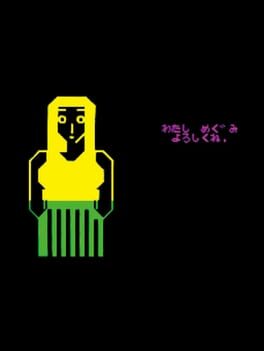

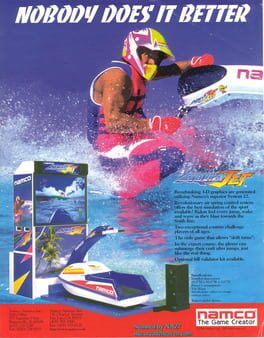
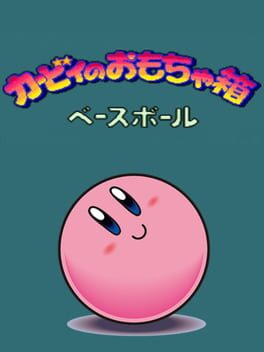
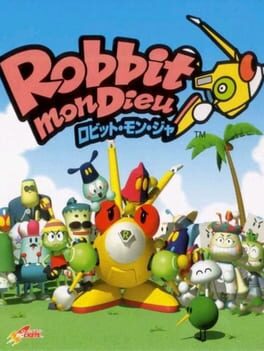
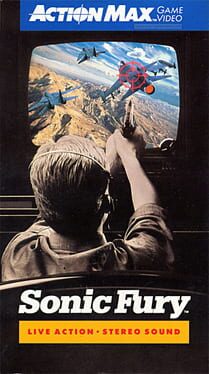
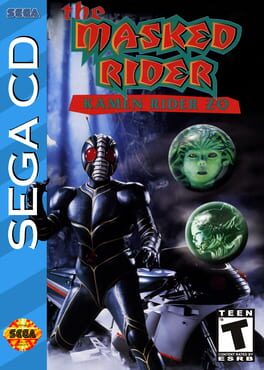
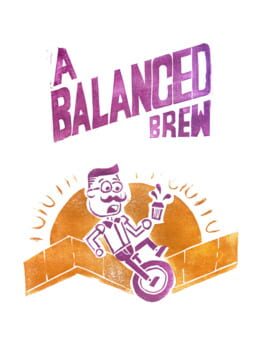

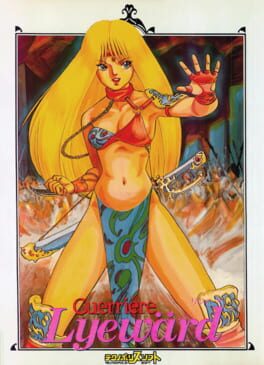
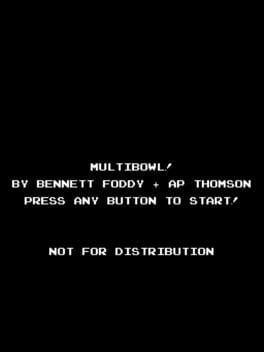

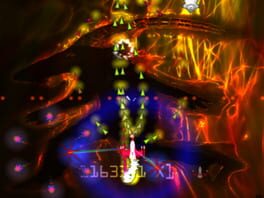
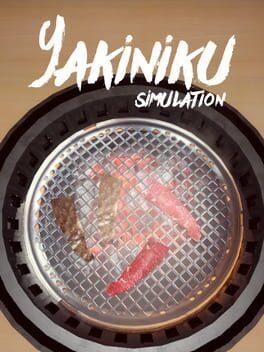
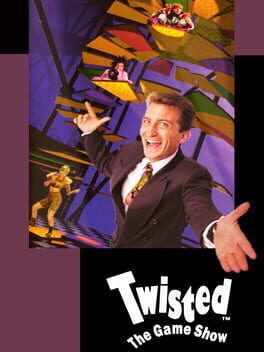
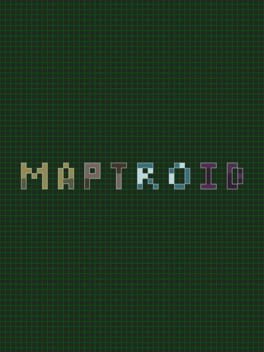


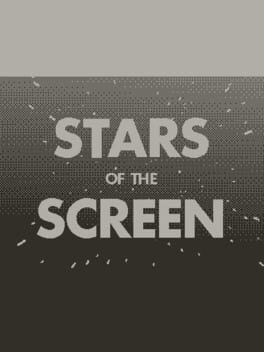


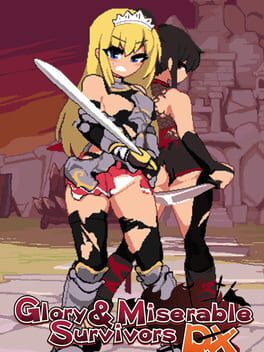


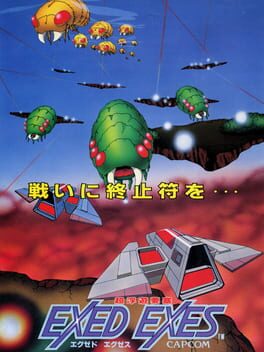
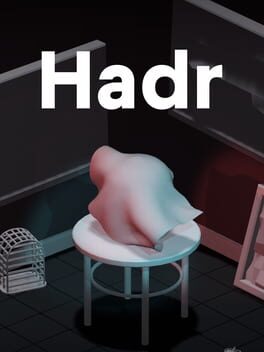
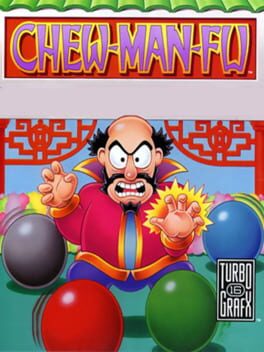
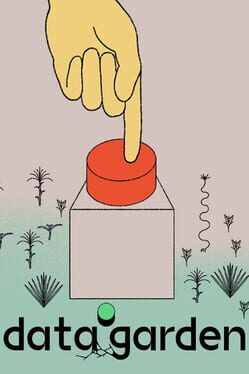
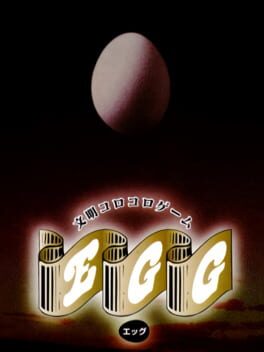
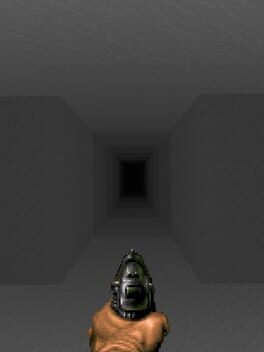
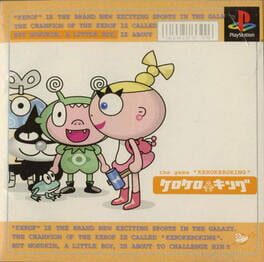
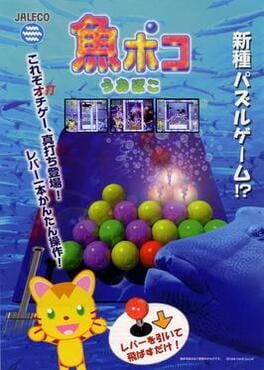


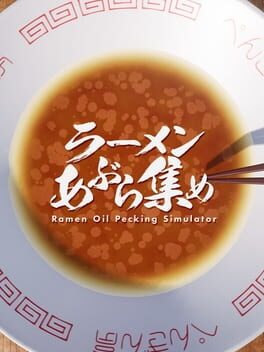
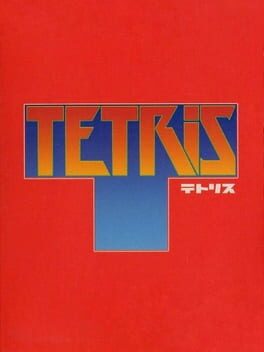
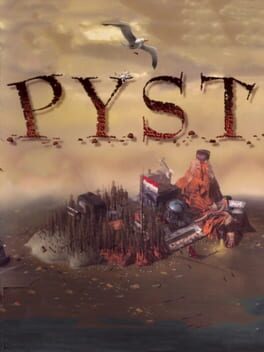
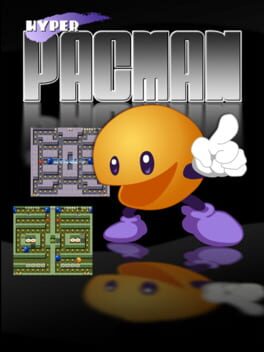
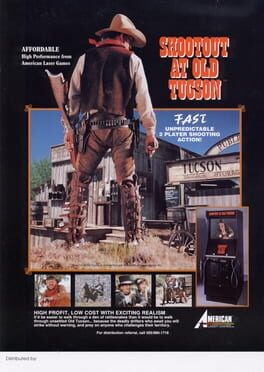
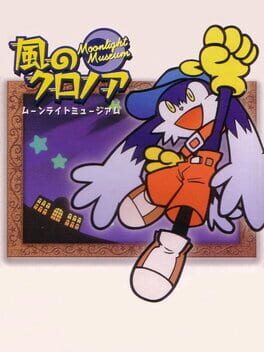



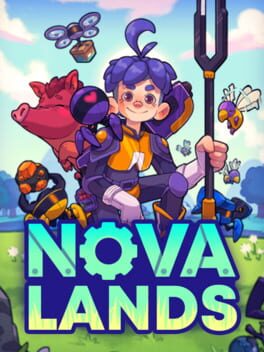

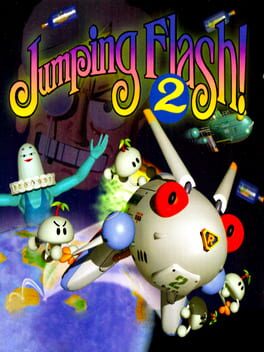
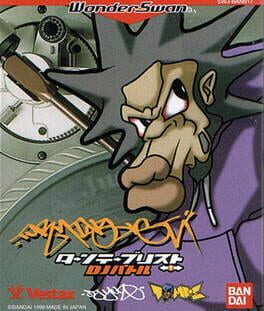
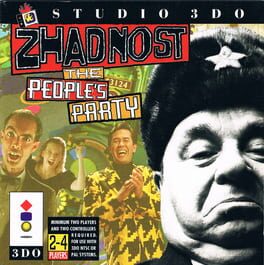

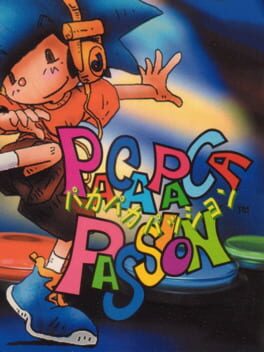
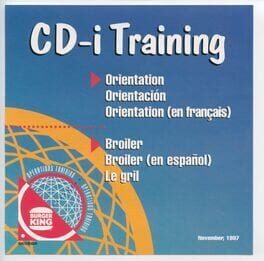


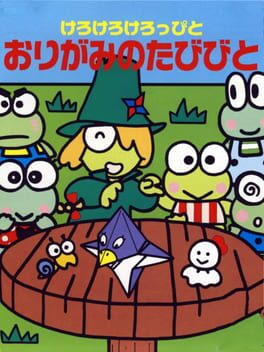

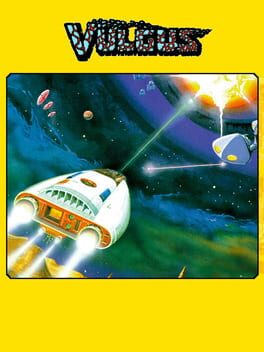
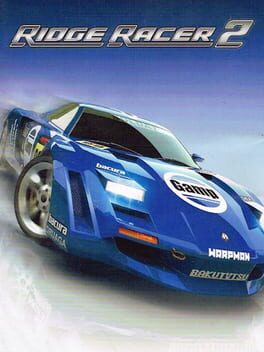
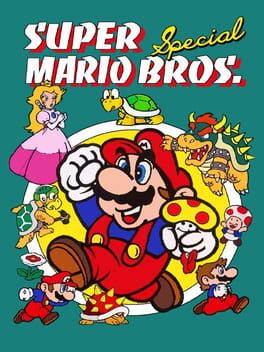
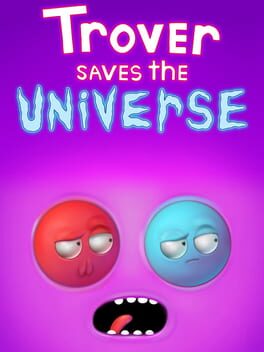



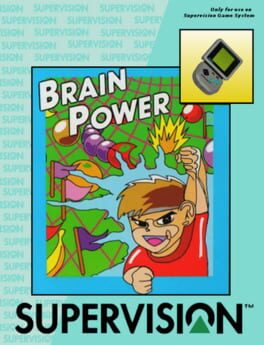

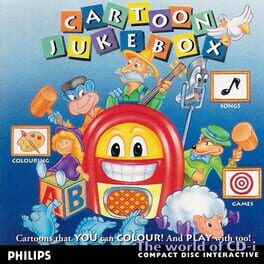
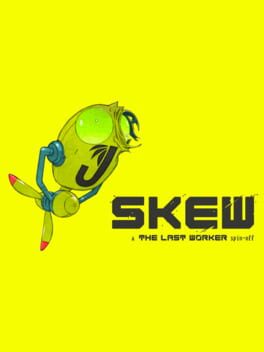
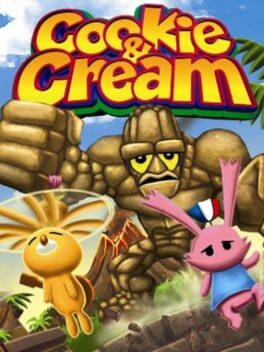

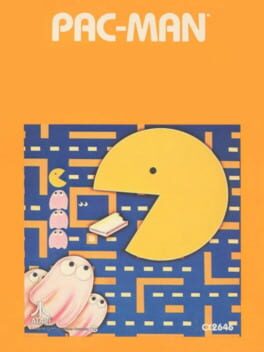
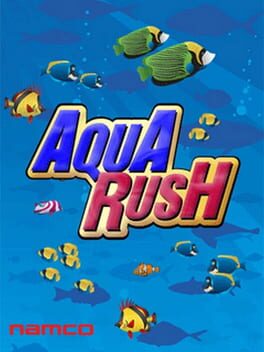
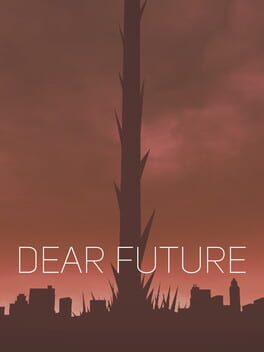
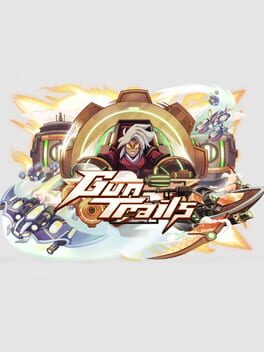
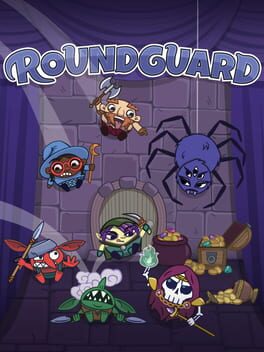
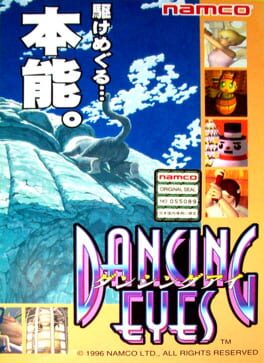

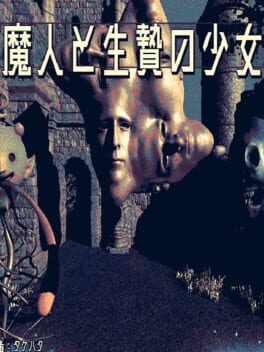
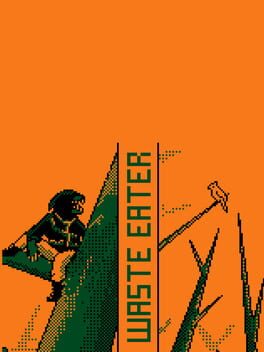
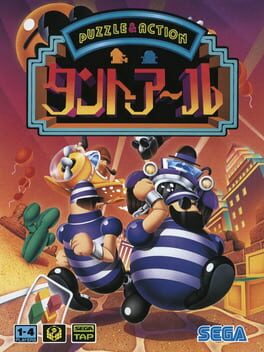
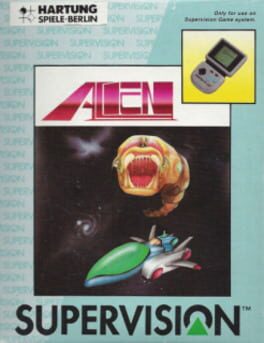

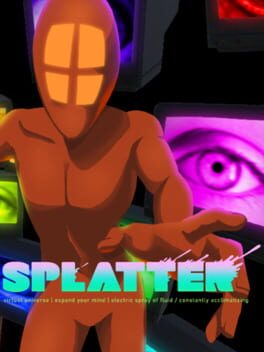
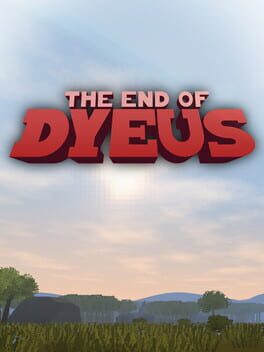
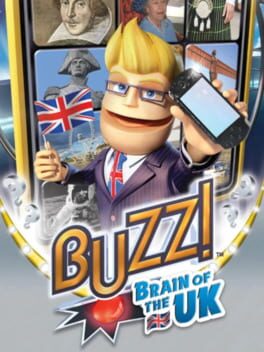
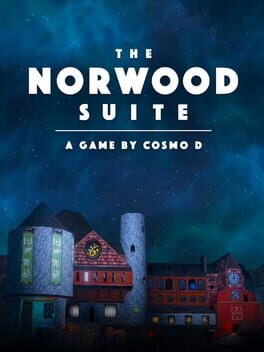

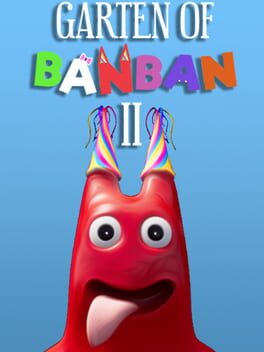
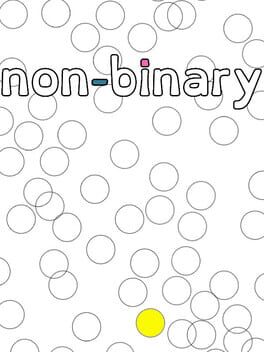
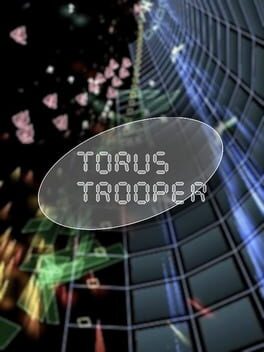
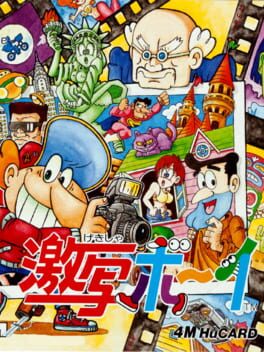
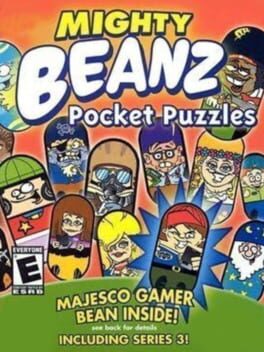
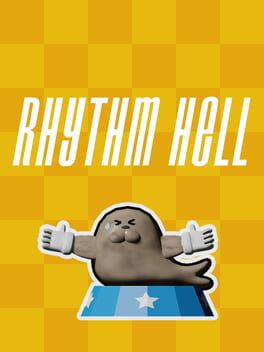

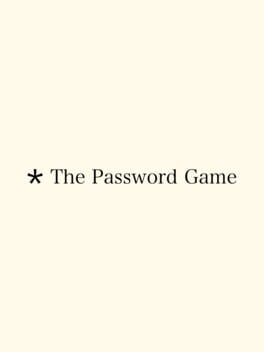
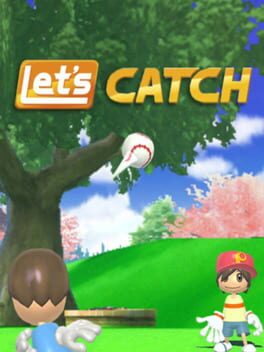
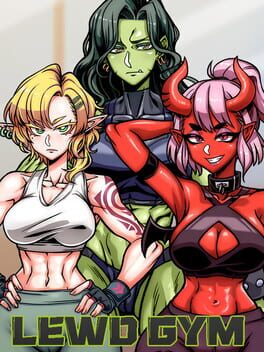
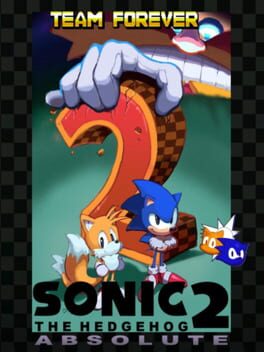
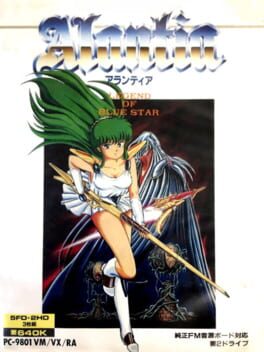
DeemonAndGames
5 months ago
For real tho I'm so glad you made this, I didn't even know you made a follow up to your 177 review so early in the year until I just saw it here, same things goes for a ton of reviews I hadn't checked out till now. Amazing year full of amazing reviews, that's something that I could say about a ton of the talented people on here (which is a lot) but your works are always a fantastic read and an inspiration for me and I'm sure also for many others. Excellent work!